- Pontoon Boats
- Personal Watercraft
- nauticalknowhow
- Nautical Knots
- Tools and Calculators

What are the Different Classes of Boats?
Classes of boats and types of boats are two different things. Every type of boat fits into one of four classes of boats. While a type of boat can vary significantly in appearance and function, class is easy to understand. Boat classes are all determined by the overall length of the vessel.
The class of a boat is significant for you as a boat owner. Boats classes are required to meet certain safety guidelines based on those classes. The size of your boat determines what you need to keep on board. Let’s take a look at the different classes of boats. We’ll also get into different types of boats and see where they fit in terms of class.
Class A Boats
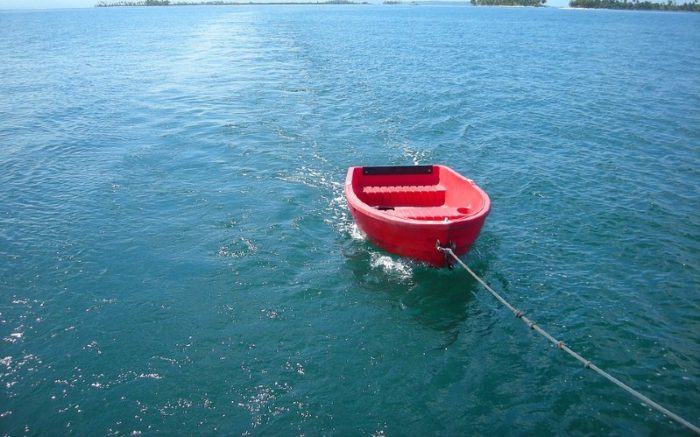
Any boat that clocks in at under 16 feet in length. That means it could be:
- a fishing boat
- A personal watercraft
- An inflatable boat
Recreational boats that are less than 16 feet in length are not required to carry any day signals on board. That said, there are safety requirements. These are regulated by the US Coast Guard. It’s also worth noting that these regulations are slightly different for canoes and kayaks.
Canoes/Kayaks Under 16 Feet
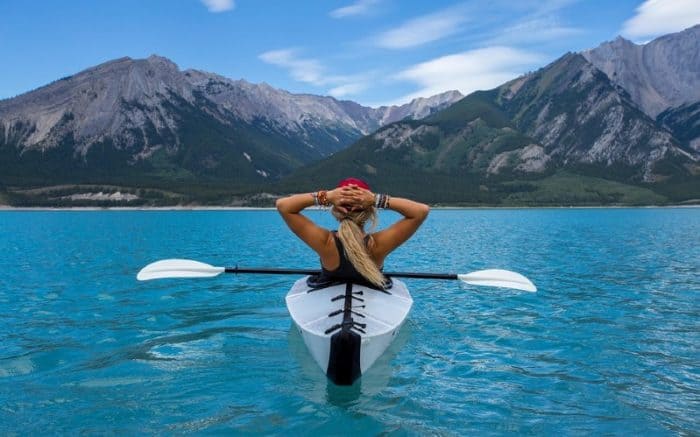
For these vessels, a Type I, II, III or V personal flotation device must be available for every person on board. These need to be US Coast Guard approved flotation devices. They need to be the right size and wearable by the person who plans to wear them as well. If the person is not wearing it, it needs to be someplace they can reach it easily. We recommend anyone on a boat of this size keep their flotation device on at all times. The minimum requirement is that one be available and easy to reach. In an emergency, you can save yourself precious time by having it on already. This is especially true for children on boats.
Visual distress signals are required on the vessel if it’s being operated at night. Your night signal has to be made within the last 42 months as well.
Sound devices are required as well. A whistle is recommended but a horn will work also.
Other Boats Under 16 Feet
All boats under 16 feet require the same personal flotation devices. The rules for a kayak or canoe apply here as well. One for everyone on board that is accessible and wearable. A distress signal is also required for these boats. Sound signals are the same as for kayaks and canoes as well.
There are additional requirements for these kinds of boats if they meet certain conditions.
A B-1 fire extinguisher of any type must be on board any vessel under 16 feet besides a canoe or kayak. That is, if it has an enclosed engine, enclosed living space, or a permanent fuel tank.
A type I, II, or III Marine Sanitation device is required if the vessel has an installed toilet.
A backfire flame arrestor is required if the vessel has a gasoline-powered engine. The exception is if it is an outboard motor.
Enclosed engines must also have ventilation that meets Coast Guard standards.
Class I Boats
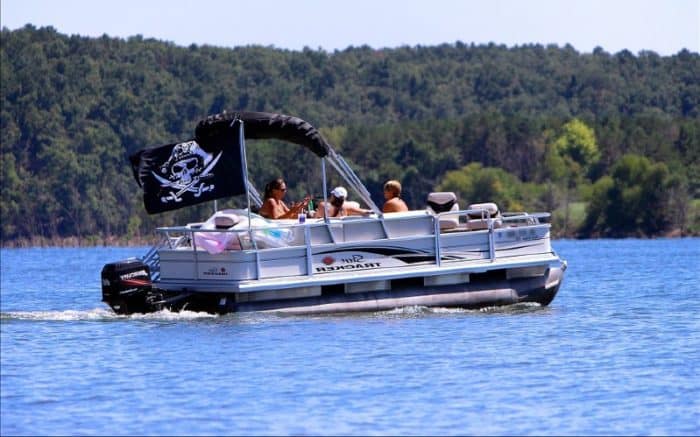
Boats that are between 16 feet and 26 feet fall under this classification. Any number of boats could fall into this class.
- Smaller deck boats
- Cuddy cabin boats
- Pontoon boats
- Aluminum fishing boats
- Wakeboard boats
All Class I boats must have one personal flotation device of Type I, I, III or V per person on board. In addition, one throwable Type IV device is required to be on board. Often people overlook these on tow sports boats. They will only think of the person looking for a thrilling ride water skiing as the one who needs a PFD. The Coast Guard requires them for everyone, however.
A B-1 fire extinguisher of any type is also required to be on board. This is true, again, if the engine is enclosed. It’s not required for outboard motor boats. However, as before, if there is an enclosed living space or permanent fuel tank, then you do need a fire extinguisher.
This size of boat requires specific distress signals. You need a minimum of three day use and night use flares. You can also have a non-flare substitute for day use in the form of an orange distress flag. A Non-pyrotechnic substitute for night use is an electric SOS light. Flares must have been made within the last 42 months.
A horn or whistle is needed as a sound signal.
Class II Boats
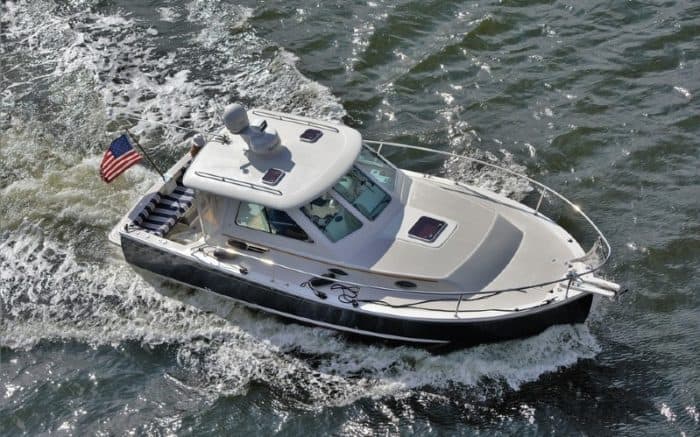
Class II boats are any vessel that span 26 feet to 40 feet. This can include
- Cabin cruisers
- Bowrider boats
- Trawler boats
- Runabout boats
These boats meet the same requirements for PFDs as Class I boats. That means every single passenger on board needs to have access to their own life jacket or other PFD. The acceptable types are Type I, II, III and V. And again a throwable Type IV is also required. These recreational boats can easily hold over one dozen people. Even if you’re freshwater fishing in shallow waters, these requirements must be met.
At this size, either one B-II fire extinguisher or two B-Is are needed. Remember, marine plywood isn’t able to stand up to fire well at all. The extra extinguishers could be a lifesaver at this size of a boat. Nothing ruins some relaxed cruising faster than a boat fire.
Visual distress signals on this kind of boat are the same as those for Class I boats. That means three day use and three night use. Three combination day and night use signals are also acceptable. These are essential for any overnight trips on the boat. Even high performance boats can run into troubles in the dark. Make sure any signal flares have been manufactured within the last 42 months.
Sound devices must be present as with lower boat classes.
Enclosed engines must also have ventilation that meets Coast Guard standards
This class of boat is also required to have pollution regulation placards. Your boat will need a 5″ x 8″ Oil Discharge placard and 4″ x 9″ Waste Discharge placard.
Class III Boats
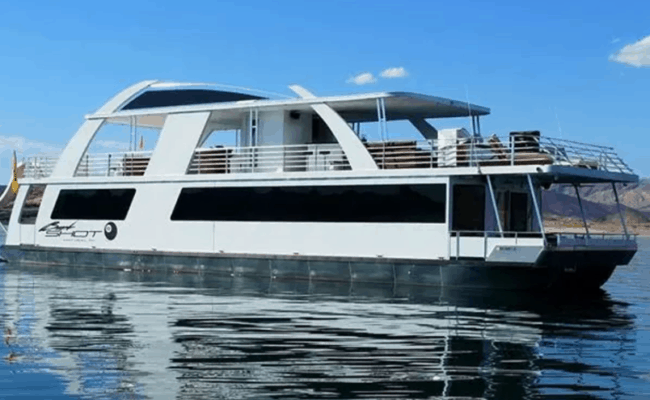
These boats range from 40 feet to no more than 65 feet in length. This can include
- Cigarette boats
- Sport fishers
These are the largest class of boat available to typical boat owners. For these, the same flotation device standards apply as they did for Class II. That means one PFD of Class I, II, III or V is required for every passenger on board. Since different types of boats can carry passengers in greater numbers, this needs to be respected. Make sure every single person knows where the PFD is and how to wear it. Each person must have one that fits properly.
In terms of fire extinguishers, the rules change again with Class III boats. You will need one B-II extinguisher and one B-I extinguisher on board. Alternatively, you could have three B-I extinguishers handy.
Visual distress signals and sound signals are the same as the requirements for smaller class boats. That means three day use and three night use signals. An orange signal flag may substitute one of the day use flares, and an electric SOS light can substitute for one of the night use. A horn or whistle is also required.
This class of boat is also required to have pollution regulation placards. Your boat will need a 5″ x 8″ Oil Discharge placard and 4″ x 9″ Waste Discharge placard. If the vessel has a galley then it must also have a waste management plan.
At this length, the boat must also have the Inland Navigation Rules on board. This is the “Rules of the Road” that govern boating.
Boats Over 65 Feet
Some yachts and things like a ferry boat can easily be over 65 feet. These no longer qualify as subject to small boat regulations. Typically no one is going to own a personal watercraft of this size. The Coast Guard does have regulations in place if you are on a large vessel such as this, however. These apply to vessels from 65 feet up to 165 feet. After that, vessels are typically considered research, commercial, or military.
The rules regarding flotation devices remain static here. One Type I, II, III or V PFD for every passenger on board. In addition, one Type IV throwable device. It’s worth noting there that the “Type” system will not be around forever. The Newton system is slowly being phased on. Newtons measure pounds of force and help indicate how much a PFD can keep afloat. This buoyancy rating in Newtons has been in place since 2019. The transfer is going slowly to allow people time to adjust. Most PFDs you purchase now will explain buoyancy in Newtons.
For instance, a Type II flotation device is equivalent to a current PFD that is rated for 70 Newtons. This device should be able to keep most people floating face up in the water. Type III devices will be replaced with 70 Newton rated PFDs that do not turn you face up. Each device has a Newton rating plus icons. These explain how much weight the PFD is meant to keep you afloat and how it floats you. In several years time, all PFDs will follow these guidelines. That said, old PFDs are still perfectly legal and usable.
For fire extinguishers, weight becomes a factor at this size. Vessels that weigh up to 50 gross tons need one B-II extinguisher. Over 50 gross tons requires two B-II extinguishers on board.
Visual and sound signals are the same for the previous class of vessels. This class does have a variation in sanitation requirements, however. A Type II or Type III marine sanitation device is required for this size of a vessel.
Additional requirements are the same as for the previous class. This includes sanitation and ventilation. The backfire flame arrestor must meet the same requirements as well. A copy of the inland navigation rules must also be on board the boat at all times, also.
What Class are Fishing Boats?
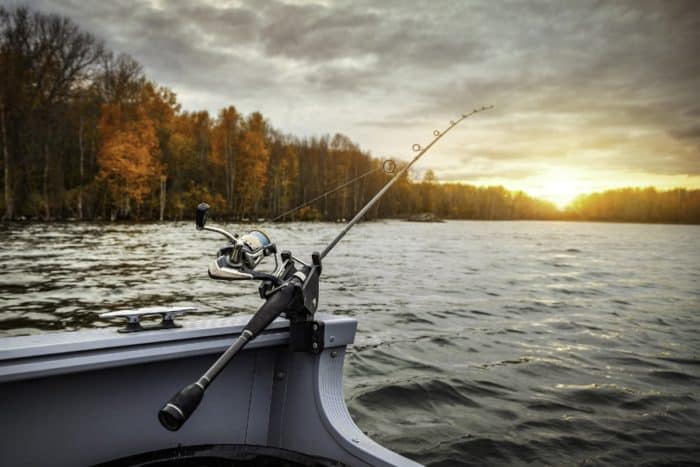
There are dozens and dozens of kinds of boats in the world. You have banana boats, log boats, bass boats and so many more. That’s why the class system is broken down by length. It makes it much easier to categorize a boat in these simple terms rather than trying to manage each type individually.
As a result, something like a fishing boat does not necessarily fit into one class. Your fishing boat could easily fit into literally any one of these classes. Remember, a fishing boat is not even technically a specific kind of boat. A fishing boat is just a boat from which you go fishing. A pontoon boat or some high performance boat could be a fishing boat. An inflatable dinghy could be a fishing boat. There is no standard for that particular description of a boat.
Does a Fishing Boat Need All The Same Safety Gear?
Some people question the application of safety standards. A Class I boat that only has one person on board seems different than one with ten people on board. But the rules are adaptable. If you are the only passenger on the boat then you only need one flotation device. You only need the fire extinguisher if your boat meets the requirements for it. That means something other than an outboard motor.
Man powered boats do not require the same level of safety and concern that power boats do. That’s why canoes and kayaks are exempt from requiring a fire extinguisher. After all, what would be the point? But just because your boat doesn’t have a swim platform or whatever doesn’t matter. Smaller boats or bigger boats all have the same potential to get into trouble. These rules are meant to help prevent that as much as possible. What About Pontoon Boats and Deck Boats?
No matter what kind of boat you’re on, the Coast Guard requirements apply evenly. Again, this can sometimes seem unnecessary. Something like a ski boat may seem more dangerous than cruising around on a deck boat. If you’re just relaxing on inland waters trying to catch largemouth bass, it can seem like overkill. But these measures are designed to ensure safety. In fact, these are the minimum requirements that the Coast Guard has implemented.
Some boaters prefer to have additional measures in place. For instance, as we said above, we recommend wearing a PFD at all times. This is not specifically required, only that the PFD be wearable and accessible. We feel that, the more people on board a boat, the more important it is to make sure everyone is wearing a PFD. This can cut down on wasted time and confusion if an accident happens later. If everyone scrambles for a PFD at the same time, a bad situation could easily become worse.
The Bottom Line
Boat classification has no effect on how you enjoy your boat. It also doesn’t change what you are allowed to do on your boat. The only purpose of classifications is to account for safety on board. Larger boats need to take more care in keeping the boat and passengers safe. Understanding the requirement is key to ensuring the safety of everyone on the water. Make sure you know the full dimensions of any boat you plan to take out onto the water. Once you are aware, you should always do a pre-departure check of the boat.
It’s important to know if you have all the safety gear every time you head out. Make sure the personal flotation devices are all in good working order. Check the date on all flares or visual signals to make sure they meet requirements. Also, check the date on your fire extinguishers before heading out as well. Old gear should be replaced immediately. It’s better to have it and not need it than to need it and not have it.
Keep yourself and your passengers safe and you’ll be having a great time on the water.
My grandfather first took me fishing when I was too young to actually hold up a rod on my own. As an avid camper, hiker, and nature enthusiast I'm always looking for a new adventure.
Categories : Boats
Leave a Reply Cancel reply
Your email address will not be published. Required fields are marked *
Save my name, email, and website in this browser for the next time I comment.
More in Boats

What Is A Gunwale?

131 of the Best Hawaiian Boat Names

167 Patriotic Boat Names

The 138 Best Boat Names for Dog Lovers

The People’s Poncho Review and Ratings

Oru Lake Kayak Review

About Boatsafe
Established in 1998, BoatSafe is your independent guide into the world of boating, fishing, and watersports. We provide expert insights and detailed guides to help you find products tailored to your needs and budget.
Contact Boatsafe
- Address: 4021 West Walnut Street. Rogers, AR 72756
- Phone: (479)339-4795
- Email: [email protected]
Site Navigation
- How We Test
- Corrections Policy
- Privacy Policy
- Terms & Conditions
- Editorial Policy
- Affiliate Disclosure
Our Reviews

All content is © Copyright 2024. All rights reserved.

Boating Life
Boat classes explained.
A boat’s class is defined by its length, which is measured along the center line, from the tip of the bow to the stern, not including platforms, outboard motors, attachments, or anything that is not part of the actual hull. The class of a boat governs the safety requirements set forth by federal and state law. These requirements are regulated by the U.S. Coast Guard.
Boat Class vs. Boat Category
As we’ve mentioned, boat class is determined by length and is strictly related to the safety guidelines set forth by law. Boat category, on the other hand, is the type of boat as defined by manufacturers; categories such as bay boat, center console, deck boat, skiff, etc.
The 4 Boat Classes
Boats are divided into 4 classes: Class A, Class I, Class II and Class III. The only feature used to appoint a boat’s class is its length.
A Class A boat is any boat whose total length is under 16 feet.
Types of Boats
Boats that meet this classification include:
- Canoes/Kayaks
- Small Fishing Boats
- Inflatable Boats
- Personal Watercraft
Safety Rules & Regulations
It is not required to have day signals on board Class A boats, but it is required to have visual distress signals on board when operating at night. The signal must have been made within the last 42 months. A sound device such as a whistle or horn must also be present at all times.
The vessel must have at least one U.S. Coast Guard approved, Type I, II, III or V personal floatation device per person aboard. These must fit all persons properly, including children, and should be easily accessible. It is recommended that everyone wear their flotation device at all times, but the requirement is only that it is within reach of the individual that will be wearing it.
All of the above requirements are the same for canoes and kayaks. For all Class A vessels other than canoes and kayaks, the following requirements apply.
These boats must have a B-I fire extinguisher if it has a permanent fuel tank, enclosed engine, or enclosed living space. Vessels with enclosed engines are required to have U.S. Coast Guard approved ventilation systems, and for boats with gasoline-powered engines, excluding outboard motors, a backfire flame arrestor must be on board. Lastly, if there is an installed toilet, the boat must be equipped with a Type I, II, or III Marine Sanitation device.
A Class I boat is any boat whose total length is between 16 and 26 feet.
- Tow Sports Boats
- Aluminum Fishing Boats
- Small Deck Boats
- Cuddy Cabin Boats
- Wakeboard Boats
Safety Rules & Regulations
It is required to have a minimum of three day and night use flares signals on board Class I boats. You are allowed one non-flare signal substitute each for day and night. The day signal must be an orange distress flag and the acceptable substitute at night is an electric SOS light. These signals, including the flares, must have been made within the last 42 months. A sound device such as a whistle or horn must also be present at all times.
The vessel must have at least one U.S. Coast Guard approved, Type I, II, III or V personal floatation device per person aboard, as well as a throwable Type IV device. These must fit all persons properly, including children, and should be easily accessible. It is recommended that everyone wear their flotation device at all times, but the requirement is only that it is within reach of the individual that will be wearing it.
A Class II boat is any boat whose total length is between 26 and 40 feet.
- Cabin Cruisers
- Small Sail Boats
It is required to have a minimum of three day and night use flares signals on board Class II boats. Three combination day/night signals are acceptable. You are allowed one non-flare signal substitute each for day and night. The day signal must be an orange distress flag and the acceptable substitute at night is an electric SOS light. These signals, including the flares, must have been made within the last 42 months. A sound device such as a whistle or horn must also be present at all times.
These boats must have either one (1) B-II or two (2) B-I fire extinguishers on board. Vessels with enclosed engines are required to have U.S. Coast Guard approved ventilation systems, and for boats with gasoline-powered engines, excluding outboard motors, a backfire flame arrestor must be on board. If there is an installed toilet, the boat must be equipped with a Type I, II, or III Marine Sanitation device.
A vessel this size must also have a 5” x 8” Oil Discharge placard and a 4” x 9” Waste Discharge placard.
A Class III boat is any boat whose total length is between 40 and 65 feet.
- Sport Fishers
It is required to have a minimum of three day and night use flares signals on board Class III boats. Three combination day/night signals are acceptable. You are allowed one non-flare signal substitute each for day and night. The day signal must be an orange distress flag and the acceptable substitute at night is an electric SOS light. These signals, including the flares, must have been made within the last 42 months. A sound device such as a whistle or horn must also be present at all times.
These boats must have either one (1) B-II and one (1) B-I or three (3) B-I fire extinguishers on board. Vessels with enclosed engines are required to have U.S. Coast Guard approved ventilation systems, and for boats with gasoline-powered engines, excluding outboard motors, a backfire flame arrestor must be on board. If there is an installed toilet, the boat must be equipped with a Type I, II, or III Marine Sanitation device.
A vessel this size must also have a 5” x 8” Oil Discharge placard and a 4” x 9” Waste Discharge placard. If there is a galley, a waste management plan is required as well.
With boats this size, it is required to have Inland Navigation Rules aboard.
Bonus Class: Boats Over 65 Feet
Although boats over 65 feet in length do not have a class as it relates to personal use boats, they are subject to regulations. The vessel must have at least one U.S. Coast Guard approved, Type I, II, III or V personal floatation device per person aboard, as well as a throwable Type IV device. These must fit all persons properly, including children, and should be easily accessible. It is recommended that everyone wear their flotation device at all times, but the requirement is only that it is within reach of the individual that will be wearing it.
The fire extinguisher regulations for a vessel of this size are based on weight. These boats must have one (1) B-II fire extinguisher if the boat weighs up to 50 gross tons or two (2) B-II extinguishers if it is over 50 tons. These vessels are required to have U.S. Coast Guard approved ventilation systems, and a backfire flame arrestor. A Type II or III Marine Sanitation device is required.
Final Words
When you purchase or are aboard any boat, it is important to know its class so you can verify it meets all safety guidelines. In case of emergency, being down even one floatation device, sound signal or flare could completely change a situation. It is always recommended that passengers abide by safety requirement and precautions while on the water. Everyone here at Ingman Marine wishes you a happy and SAFE boating season!
Happy Boating!

Dealership Headquarters
- How to Catch Fish
- How to Tie Fishing Knots
- Fishing Gear and Tackle
- How to Fish with Lures
- How to Fish with Live Bait
- Fishing Safety
- Fishing Tips
- When to Fish
- Types of Fishing
- Fishing and Conservation
- Fishing Resources
- When to Saltwater Fish
- Saltwater Bait and Lures
- Saltwater Fishing Tackle
- Types of Saltwater Fishing
- Saltwater Fishing Gear
- Saltwater Fish Species
- Types of Freshwater Fishing
- When to Freshwater Fish
- Freshwater Bait and Lures
- Best Freshwater Fishing Gear
- Fly Fishing Basics
- Fly Fishing Flies
- Fly Fishing Gear
- Fly Casting
- Ice Fishing Basics
- Ice Fishing Gear
- Ice Fishing Techniques
- Boating Basics
- How to Boat
- Boating and Water Safety
- Choose Your Boat
- Use Our Boat Explorer Tool
- Get on the Water
- Register Your Boat
- Get Your Fishing License
- Places To Boat And Fish

- Connecticut
- District Of Columbia
- Massachusetts
- Mississippi
- New Hampshire
- North Carolina
- North Dakota
- PennsyIvania
- Rhode Island
- South Carolina
- South Dakota
- West Virginia
Classes of Boats
Boats are identified in classes by length. Federal and state laws require certain equipment aboard boats depending on the class or length of the boat. Learn about different classes of boats and how to measure vessel size.
Fishing Boat Sizes
Boats are divided into four length classes:
- Class A Vessels: These classes of vessels have less than 16 feet in length.
- Class I Vessels: These classes of vessels range from 16 feet to no more than 26 feet in length.
- Class II Vessels: These classes of vessels range from 26 feet to no more than 40 feet in length.
- Class III Vessels: These classes of vessels range from 40 feet to no more than 65 feet in length.
Measuring Vessel Length
The length of a fishing vessel is measured from the tip of the bow in a straight line to the stern. This does not include outboard motors, brackets, rudders, bow attachments, wake board towers or swim platforms and ladders that are not a molded part of the hull. Watch the video below for more information.
Fishing Boat Capacity
Always check the capacity plate, which is usually found near the operator’s position or on the vessel’s transom. This plate indicates the maximum weight capacity and maximum number of people that the vessel can carry safely. Always follow the recommended capacity in the owner’s manual and on the manufacturer’s warning decal.
Best Boats For Beginners
You are thinking of buying a new boat. Congratulations, there is a boat for every budget, and there are dozens of types to choose from. If you’re a beginner, you may want to consider an all-purpose-fishing boat, aluminum fishing boat, bowrider or pontoon boat for ease of use. Watch the following video to see the differences among these options.
Check this boat comparison tool from Discover Boating to compare all types of fishing boats.
KEEP LEARNING

TakeMeFishing x Teen Vogue
Join us on a creative journey as fashion designer Ahmrii Johnson walks us through her collaborative vision and process with Teen Vogue and fashion brand, Rentrayage, to create a special piece.

First Catch Center Trailer Gallery
FCC Trailer Photo Gallery

How to Tie a Duncan Knot
Learn to tie a Duncan knot by following these five simple steps. Watch our new video.
FIND PLACES TO BOAT AND FISH

KNOW YOUR FISH
.png?lang=en-US&ext=.png)
Largemouth Bass
NEWSWAVES SIGNUP
Stay up-to-date on RBFF’s fishing and boating programs and initiatives with the monthly NewsWaves newsletter. Read about relevant stories on the fishing and boating industry, RBFF’s work to and increase participation, the latest research and trends on fishing and boating audiences and participation and marketing insights, tips and content.
Please complete the following fields to subscribe to our newsletter.
Download this Resource
To download this free resource, please fill out the form below:
Save up to 50% on boat storage
- Boat Buying
The 4 Classes of Boats: A Complete Overview
Have you ever wondered what class your boat was in? Or what class was the best for you to purchase? There are four different classes of boats, which are [primarily] broken down by the vessel length.
The class of boat you own and operate will determine the federal and state laws, racing regulations, and safety guidelines you must adhere to.
Let’s explore the four classes of boats and their characteristics.
Understanding Boat Classes
The differences between some boat classes may seem subtle (just a few feet ). However, there is more to boat classification than just length. We’ll examine the variety of boat classes, from Class A to Class 3, and their respective safety requirements.
Class A Boats: Under 16 Feet
Class A boats, such as dinghy boats, are the smallest vessels , measuring less than 16 feet long.
These boats are ideal for calm waters and are often used for relaxed sailing and fishing ventures.
When it comes to safety requirements, all vessels under 16 feet, including jet boats, must carry personal flotation devices and a distress signal. A boat needs a fire extinguisher if it has an enclosed engine, living space, or a permanent fuel tank.
For canoes and kayaks under 16 feet, a whistle or horn is recommended as a sound device.
Class 1 Boats: 16-Less Than 26 Feet
All Class 1 boats measure between 16 and less than 26 feet in length . The Class 1 boats are suitable for both inland and coastal waters and are often used for sports fishing and relaxed cruising.
The Class 1 boat is a popular size for a first boat because of its overall pricing, maneuverability, and versatility.
Safety requirements for Class 1 boats include ventilation that complies with Coast Guard standards for enclosed engines. A backfire flame arrestor is also required.
Class 2 Boats: 26- Less Than 40 Feet
Class 2 boats are larger vessels, spanning between 26 and 40 feet in length .
As for safety requirements, life jackets or other personal flotation devices, such as Type I, II, III, or V flotation devices , must be available for every passenger.
A throwable Type IV device is also a necessity.
Additionally, boats in this class must possess a 5” x 8” Oil Discharge placard and a 4” x 9” Waste Discharge placard to comply with pollution regulations.
Class 3 Boats: 40- Less Than 65 Feet
The largest category, Class 3 boats, vary in size from 40 to 65 feet in length.
Safety equipment requirements demand that Class 3 boats owners have the following onboard: a Type II or Type III marine sanitation device , a horn or whistle, and three-day use and three-night-use signals.
Class 3 boats must have either one B-II extinguisher and one B-I extinguisher or three B-I extinguishers.
Additionally, one Type I, II, III, or V PFD ( Personal Flotation Devices ) must be present for every passenger on board, along with one Type IV throwable device.
Boats in this class must also possess pollution regulation placards.
How Neighbor is changing boat storage
Transparent monthly savings.
Renters save 30-50% on boat storage, on average. No rate hikes.
Keep your boat nearby
25,000 locations means that your boat is always close by.
Storage made simple
Don't settle for stone age tech and long contracts. Neighbor makes it easy.
Boat Class vs. Boat Types
“Boat class” refers to the subcategories divided according to specific characteristics or racing criteria.
In contrast, the term “boat type” describes the particular design and purpose of a boat, often indicating its intended use or style.
Your level of experience and the intended use of the boat should inform the boat class you choose. You’ll also want to approach your decision on boat type with a similar thoughtfulness. With boat type, you can choose between small boats , sailboats , fishing boats , and even watersport boats well suited for lakes .
Save up to $1,200/year on boat storage
Types of boats .
Knowing the purpose of a boat and its specific features can help you make an informed decision when selecting the right vessel for your needs.
Fishing Boats
Fishing boats come in various sizes and classes. From small dinghies and jon boats for calm inland waters to large trawlers and center console boats for offshore fishing
Depending on the class of fishing boat you purchase, safety requirements will vary.
Man-powered boats such as canoes and kayaks are exempt from requiring a fire extinguisher. Other factors to consider when choosing a fishing boat include its capacity and the type of fishing you plan to engage in.
Some fishing boats can also have features that make them comfortable to carry passengers from one location to another, like seats with cushions that can fold up when not fishing. Smaller fishing boats do well in shallow waters, but bigger boats usually need 3-4 feet of water depth to work well.
Recreational Boats
Recreational boats include a wide range of vessels designed for leisure activities such as cruising, sailing, and entertaining.
Some popular recreational boats are runabout boats, towboats, fishing boats, sailboats, cabin cruisers, and pontoon boats.
These boats are designed to provide space for sitting, working, fishing, or lounging, depending on the specific type.
Look for additional features like swim platforms and GPS navigation to enjoy your days out on a recreational boat.
Watersports Boats
Watersports boats are designed specifically for activities like wakeboarding, waterskiing, and tubing.
These boats typically feature specialized hull forms, propulsion systems, wake shaping control systems, and onboard wake enhancement technology to optimize the experience for water sports enthusiasts.
High-performance boats like watersports boats often include ski boats, inboard ski boats, and jet boats.
Selecting the Right Boat for Your Needs
In addition to analyzing the type and class of boat you may be interested in, consider your skills as a boater and the situations you expect to encounter on your boat.
Beginner-Friendly Boats
Beginner-friendly boats are noted for their stability, ease of handling, and suitability for beginners learning to operate and steer a boat.
For those new to boating, some beginner-friendly boats are:
- All-purpose fishing boats
- Aluminum fishing boats
- Pontoon boats, including a pontoon boat designed for fishing
Boats for Inland Waters
Inland water boats are designed to navigate lakes , rivers, and other tranquil inland waterways. They are typically smaller and suitable for fishing, cruising, and entertaining in sheltered coastal areas.
Boats for inland waters include:
- Pontoon boats
- Freshwater fishing boats
Boats for Offshore Adventures
Larger offshore adventure boats are designed for serious offshore fishermen or families looking for coastal and offshore fishing, diving, and traveling experiences.
If you are looking for an offshore adventure, the following types of boats may suit your needs:
- Ocean-going vessels
- Trawler boats
- Sailboats
- Motorsailers
- Game fisher boats
- Expedition yachts
- Motor yacht boats
- Mega yachts
Though referring to your vessel according to its classification isn’t common in the boating world, being aware of your preferred boat class and type will help guide purchase decisions and ensure you meet safety requirements.
Deciding between the different boat classes will be difficult, but deciding where to store your boat once you’ve bought it shouldn’t be. With Neighbor—a peer-to-peer storage marketplace – you can find the ideal space to store your new watercraft while not using it. Safety, proximity, and affordability are the strong points that Neighbor can offer.
Frequently Asked Questions
What are the 4 classes of boats.
The four classes of boats are Class A (under 16 feet) , Class 1 (16 to less than 26 feet) , Class 2 (26 to less than 40 feet) , and Class 3 (40 to less than 65 feet).
What Is the Difference Between Class A, Class 1, Class 2, and Class 3 Boats?
Class I vessels range from 16 to 26 feet in length, Class II vessels range from 26 to 40 feet in length, and Class III vessels range from 40 to 65 feet in length, so there is a clear difference in size between the classes of boats.
What is a Class C Boat?
A Class C boat typically refers to a specific category of recreational vehicle classification for inshore boating. Class C boats can operate in large bays and lakes with winds to Force 6 up to 27 knots.
Related Posts
15 different types of boats: complete guide, the best types of boats for lakes: exploring your options, ultimate guide for types of fishing boats.
- Boat Travel
The Ultimate Boating Checklist 2024
9 types of small boats for every adventure.
- Boat Ownership
The Benefits of Living Aboard a Trawler Boat

Justin earns $650/mo on Neighbor. Find out how you can too!
Stay in the loop ↓
Your browser is out-of-date! You must upgrade to a different browser to experience this site.
All Chapters
- Boating Terminology
- Boat Hull Types & Designs
- Boat Engine Types Explained
- Boat Size Classifications
Boat Capacity
- Hull Identification Numbers
- Boat Registration & Titling
- Life Jacket Types & Designs
- Children's Life Jacket Recommendations & Requirements
- PFD Rules & Requirements
- Life Jacket Fitting & Care Guidelines
- Inflatable PFD Types & Tip
- Boat Fire Extinguishers
- Boat Backfire Flame Arrestor
- Boat Ventilation Systems
- Boat Navigation Light Types & Requirements
- Unpowered Boat Navigation Lights
- Visual Distress Signals
- Marine Distress Signals
- Weather Conditions
- Small Craft Advisory
- Boat Maintenance Tips
- Towing & Trailering
- Launching & Retrieving
- Pre-departure Checklist
- Rendering Assistance
- Capsizing/Falls Overboard
- Cold Water Immersion
- Fire Prevention
- Running Aground Prevention
- Accident Reports
This site requires JavaScript. Your browser either doesn’t support JavaScript or you have it turned off.
For this page to function correctly, please enable JavaScript and then refresh the page.
Boat Size Classifications & Requirements
Boat Classes By Length
Federal and state law requires that you have specific safety equipment on board depending on the class of your boat. To know whether you need flares, a fire extinguisher, a flashlight, an air horn or all of the above, you'll need to know the boat's class. Boat classes are determined by boat length. Let's review the four different classes of recreational boats as determined by length.
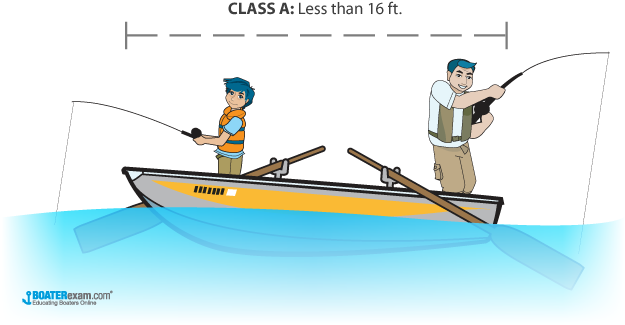
Boats measuring less than 16 feet.
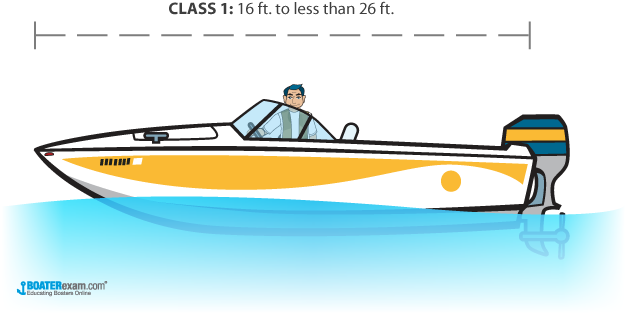
Boats measuring more than 16 feet but less than 26 feet.
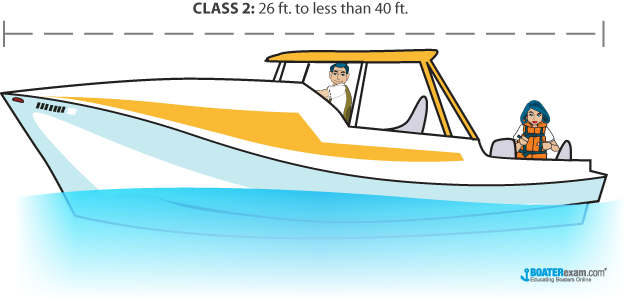
Boats measuring more than 26 feet but less than 40 feet.
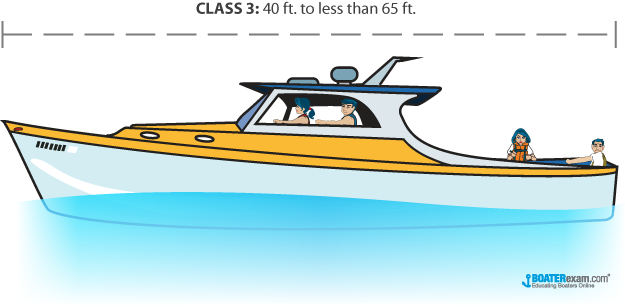
Boats measuring more than 40 feet but less than 65 feet.
How To Determine a Boat's Size
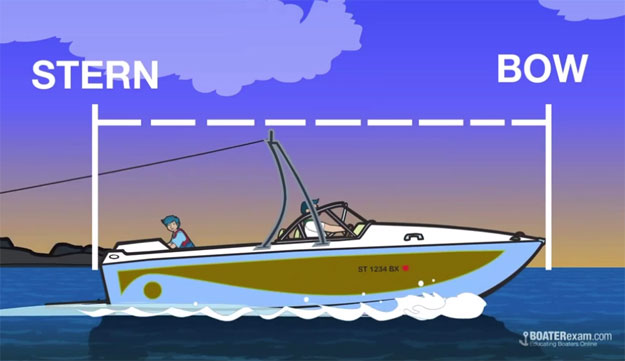
To find out a boat's length, measure along its center line from the outside of the bow to the outside of the stern. That means any attachments, such as swim platforms or wakeboard towers, don't count towards its length.
Boat Engine Types

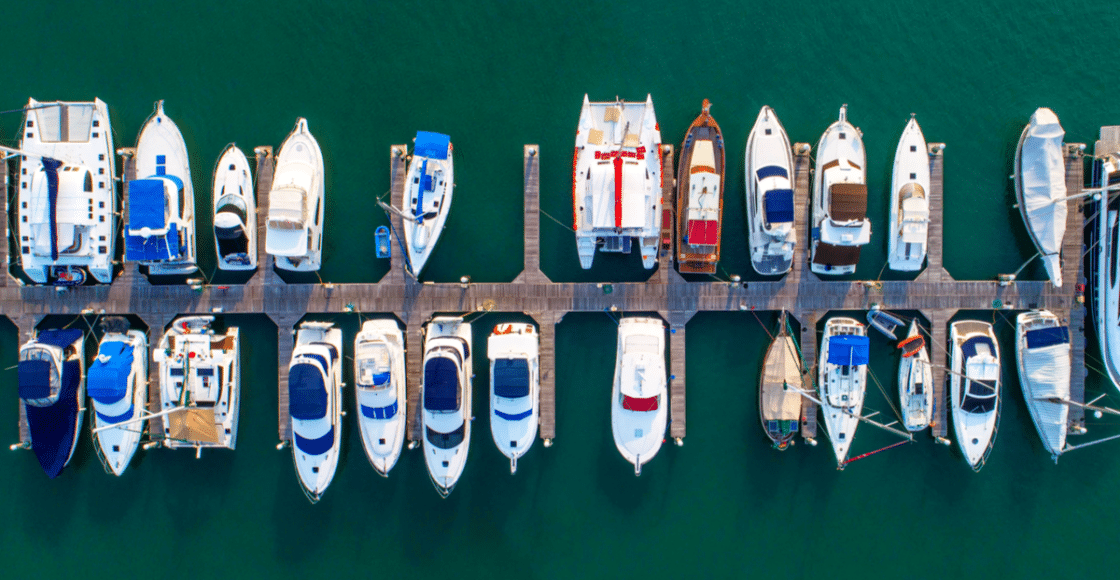
Types of Boats: A Complete Guide

Table of Contents
Last Updated on July 16, 2024 by Boatsetter Team
From canoes to the Maltese Falcon and beyond, private boats range from eight feet to megayachts, hundreds of feet in length. Used for fishing, cruising, living aboard, and as a means to get away from the beaten path, boats have been a part of the lives of humans since one decided a ride down the river on a log was pretty cool.
Boat designs have come a long way since the advent of the first dugout, but one thing remains the same. People like boats and have all manner of uses for them.
Rowboats to expedition yachts offer their owners the same thing: a day on the water pursuing a dream. Whether that dream is hooking a catfish at your local lake or chasing gamefish across the globe, people will find a way to get on the water.
In this article we’ll explore the numerous types of boats available and help you decide which one’s right for you.
How many different kinds of boats are there?
There are many types of boats, and their hull types include single and multihull, power, and sailboats.
Types of boats include:
- Aluminum fishing boats
- Fishing pontoon boats
- Inshore Fishing boats
- Read more about the best sailboats for lakes , and the best sailboats for beginners .
- Read more about the most affordable pontoon boats and luxury pontoon boats
- Hydrofoil boats
- Read more about affordable center console boats
- Luxury center console boats
- Read more about affordable bay boats
- Mega Yachts
- Expedition Yachts
- Dinghies sail/power
- Day sailors
- Coastal cruising sailboats
- Ocean-going sailboats
- Pontoon Boats
- Cabin Cruisers
- Convertible
- Cruiser racer
- Cuddy cabin
- Daysailer & weekender
- Dual console
- Express cruiser
- Fish and ski
- Inflatable outboard
- Motorsailer
- Motor yacht
- Offshore sport fishing
- Performance
- Performance fishing
- Rigid inflatable
- Saltwater fishing
Boats range in size from as few as seven feet up to hundreds of feet in length and have classes that fit within their types. This information can help you understand how you can use a particular kind of boat.
Relevant boat types comparisons
- Small catamarans VS Pontoon boats
- Pontoon VS Deck boats
- Catamaran VS Monohull
- Yacht VS Boats
- Aluminum VS Fiberglass boats
Read more about the best boat types
- Best boat brands & manufacturers
- Best ocean boats
- Best liveaboard boats
- Best boats for beginners
- Best family boats
- Most affordable cheap boats
What are the four classes of boats?
Separating boats into classes helps Federal and State authorities make it easy to determine how a particular boat is to be used. For example, a boat’s class determines the number of passengers it can carry. Thus, it also determines the number of flotation devices onboard for each occupant and other safety equipment necessary. These determinations are based on the class of boat, which puts your craft into a size range.
- Class A less than 16 feet
- Class 1 16 to less than 26 feet
- Class 2 26 feet to less than 40 feet
- Class 3 40 feet to less than 65 feet
- SRV (small research vessel) Boats of 65 feet in length, yet less than 300 gross tons fit this category.
What are the Categories of Boats
The European Union enacted the Recreational Craft Directive in 1998. It affected the designation of boat categories for boats built and sold there.
These design standards are for most boats that range in length from 8 to 79 feet, measure the seaworthiness of a vessel, and indicate a boat’s ability to manage certain wave heights and wind conditions.
A boat’s ability to range afar or stay near shore is determined by its hull strength, freeboard, stability, deck drainage, and reserve buoyancy. Any other criteria that might affect their seaworthiness are also noted when categorizing boats.
Category A – Ocean Class Boats:
Boats in this class are generally self-sufficient and designed for extended cruising into winds over Force 8, on the Beaufort scale (+ 40 Knots). They are built to take wave heights over 13 feet and are conditions that are not from a hurricane or typhoon.
Category B – Offshore Class Boats:
This class includes boats that operate offshore in Force 8 with winds up to 40 knots and seas up to 13 feet in height.
Category C – Inshore Class Boats:
This class encompasses boats that operate on lakes, rivers, coastlines, and large bays and includes boats that can stand up to Force six winds, 27 knots, and seas up to seven feet in height.
Category D – Coastal water, inland, and sheltered waters:
Boats in this class include those built for rivers and small lakes and are designed to stand up to Force 4 winds (11 – 16 knots) and wave heights of a foot and a half (18 inches).
Not all boats in the United States are built to these standards. However, you can rent a private fleet of boats in many areas of the world through Boatsetter. For example, these standards apply to many of the rentals in Europe. They also apply to vessels built in the United States by European manufacturers.
Boat classification can affect boat types, and knowing the capability of a boat based on its classification gives boat owners a better idea of the level of seaworthiness before setting off for the Caribbean.
What’s the difference between a ship and a boat?
An adage claims a ship can carry a boat, but a boat cannot take a ship. However, it is not quite that simple.
Many of today’s boats carry another boat. You can often see less than thirty-foot boats carrying kayak, or dinghy boats. Taking a small boat on your larger boat can help you get ashore in areas without dockage. However, does it make your thirty-footer a ship? No, it probably doesn’t; however, it expands its usability.
Boats for Lakes
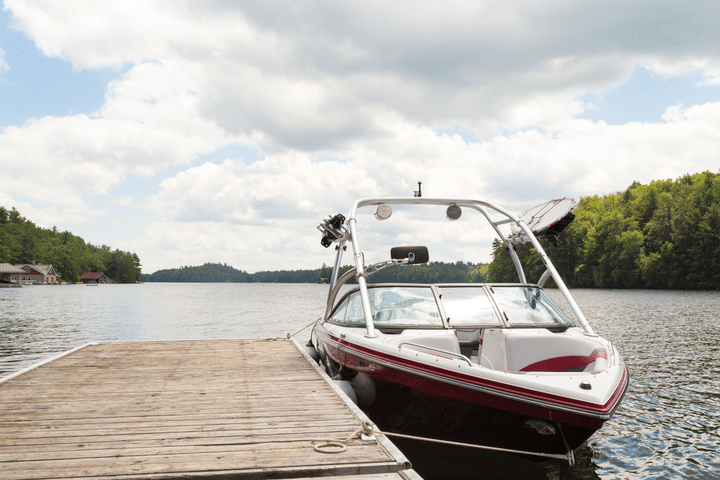
Lakes come in all sizes, as do the boats one needs to ply their waters. For example, suppose you are a boater whose playground is Lake Michigan. In that case, you will need a different boat than a boater who fishes Lake Okeechobee .
Small and shallow lakes don’t require big boats for your fishing and boating adventures. Bass boats, pontoon boats , outboard skiffs, and even rowboats are suitable for your needs.
However, if you are on a big, deep-water lake, your boat needs may be more similar to boats that spend time on the ocean . The deeper water of lakes allows for bigger waves and the need for bigger boats.
If you are a fair-weather boater, any small boat will do on the big lakes and the small. However, if you are a boater who wants to go fast, even if there’s a gale blowing, you will need more than a 25-foot powerboat, no matter how many outboards you strap to its transom .
Boats for Oceans
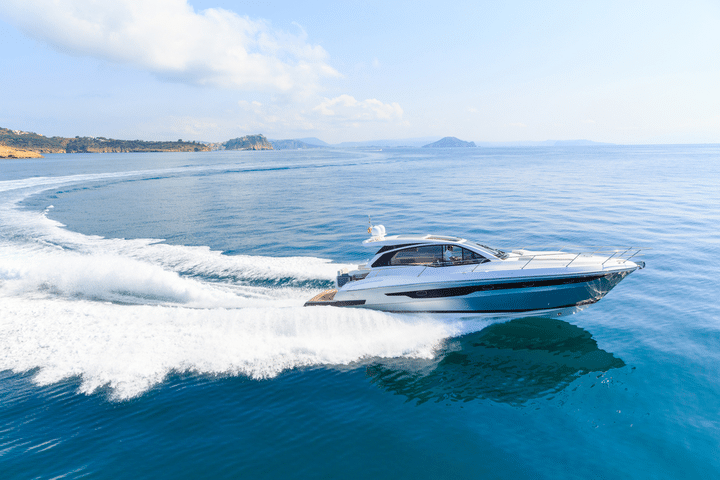
A boat of fewer than 12 feet crossed the Atlantic in 1987 , and its captain lived to tell about it. However, adventures such as that are
outside the desire of most boaters.
Power and sailboats are built for ocean-going, and most are over 30 feet in length. These ocean-going vessels include trawlers, sailboats, motorsailers, catamarans , game fisher boats, expedition yachts, and mega yachts.
Ocean-going boats usually have high sides and bows, deep V, or displacement hulls. Gas or diesel engines or sails can power them.
However, many offshore fishing boats are open center-console boats with multiple high-powered outboard or inboard engines. This abundance of power, usually on boats over 30 feet in length, can get them quickly to their fishing grounds. It also gives them the speed to outrun approaching storms if they need to make a run for home.
Specialty Boats for shallow water and big wakes
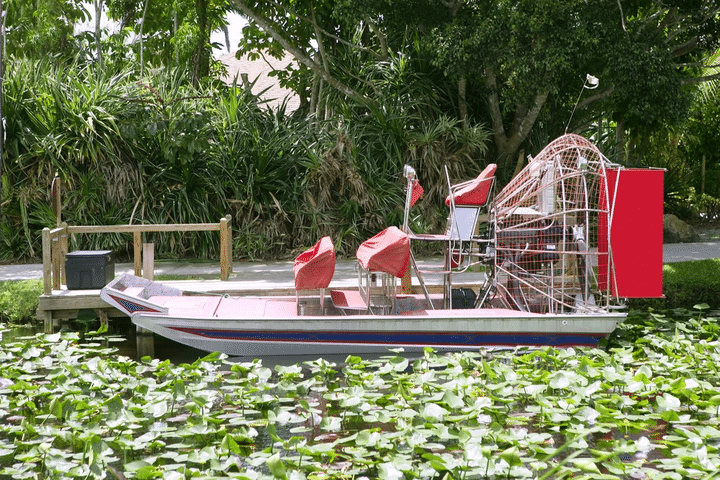
There is a particular class of boats designed for the shallows of lakes, rivers, and marshlands built to get into water that isn’t much more than ankle-deep. These vessels include airboats, flat boats, and johnboats with Gatortail mud motors.
They enable their owners to ease into backwaters where others can’t go in search of a prize catch. As a result, they are perfect boats for boaters who live near marshlands, swamps, rivers, and lakes.
Wake boats are designed to bog down and throw up a wake big enough to surf upon. They manage this feat by filling their hulls with water, making them very heavy, then plowing all that weight through the water with a powerful engine. The result is surf on demand.
What type of boat is best for you?
Only you know what you want and what you would like to do while on the water. Or, you may have an interest in boating and would like to explore its every facet. With Boatsetter , you have access to the largest private fleets of boats, yachts, and small ships available in the world. Find the right boat rentals now and start exploring all the available boat types.
From jet skis to megayachts, the Boatsetter fleet delivers. Boat owners who live near you or in locations you would like to visit have their boats ready and awaiting your arrival. All you need to do is find the boat you want to rent, where you want to rent it, and set a date. So, whether you opt for a bareboat adventure or the luxury of a captain on your cruise, a Boatsetter rental can open your horizons to every type of vessel boating has to offer.

Boatsetter empowers people to explore with confidence by showing them a world of possibility on the water. Rent a boat, list your boat, or become a Boatsetter captain today.
Browse by experience

Explore articles
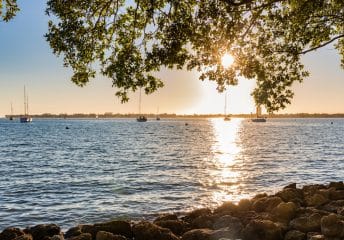
11 Best Boating Destinations in Florida

2022 Chicago Air and Water Show: Event Guide for Boaters
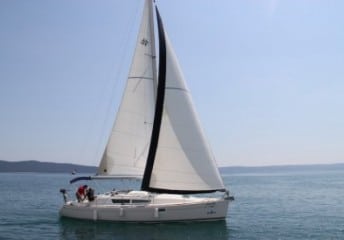
Best Small Boats to Rent or Buy in 2016
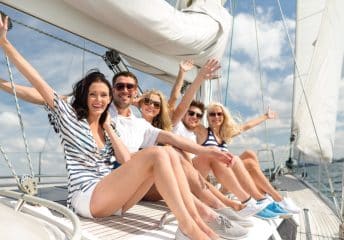

Host a Boat Party with These 9 Boat Party Theme Ideas

The global authority in superyachting
- NEWSLETTERS
- Yachts Home
- The Superyacht Directory
- Yacht Reports
- Brokerage News
- The largest yachts in the world
- The Register
- Yacht Advice
- Yacht Design
- 12m to 24m yachts
- Monaco Yacht Show
- Builder Directory
- Designer Directory
- Interior Design Directory
- Naval Architect Directory
- Yachts for sale home
- Motor yachts
- Sailing yachts
- Explorer yachts
- Classic yachts
- Sale Broker Directory
- Charter Home
- Yachts for Charter
- Charter Destinations
- Charter Broker Directory
- Destinations Home
- Mediterranean
- South Pacific
- Rest of the World
- Boat Life Home
- Owners' Experiences
- Conservation and Philanthropy
- Interiors Suppliers
- Owners' Club
- Captains' Club
- BOAT Showcase
- Boat Presents
- Events Home
- World Superyacht Awards
- Superyacht Design Festival
- Design and Innovation Awards
- Young Designer of the Year Award
- Artistry and Craft Awards
- Explorer Yachts Summit
- Ocean Talks
- The Ocean Awards
- BOAT Connect
- Between the bays
- Golf Invitational
- BOATPro Home
- Superyacht Insight
- Global Order Book
- Premium Content
- Product Features
- Testimonials
- Pricing Plan
- Tenders & Equipment
Yacht classification definitions
The merchant shipping sector is ruled by safety regulations developed since the beginning of the 20th century, and is familiar with international conventions such as SOLAS, MARPOL and Load Lines. But the application of common safety requirements to pleasure vessels is something relatively new – a continuous work in progress – and is very much dependant on the service and the flag of the yacht.
Defining the problems
Definitions do not help. How often have we read of large yachts, superyachts, megayachts, gigayachts or other bombastic adjectives? How many times have we mentioned MCA, RINA, and Lloyd’s, without having a clear idea of who’s doing what?
A good starting point for understanding the subject is to clarify the main definitions and the roles of the main players:
Large yacht
A large yacht is a pleasure vessel with a load line length equal to or over 24m. Almost all the flag administrations have adopted safety codes dedicated to large yachts and this is, therefore, the only definition having a universal meaning in the international regulatory framework of yachts.
Commercial yacht
A motor or sailing vessel in commercial use (i.e. charter) for sport and pleasure, carrying no cargo and not more than 12 passengers.
Private yacht
A pleasure vessel solely used for the recreational and leisure purpose of its owner and his guests.
Flag administration
The government of the state whose flag the yacht is entitled to fly . This administration sets the safety regulations, manning requirements and fiscal aspects relevant to the yacht registration.
Different flag administrations can inspect the safety aspects of yachts with their own inspectors (see MCA for example) or delegate this activity partially or totally to other recognised bodies such as the classification societies.
The main flag authorities in the yachting industry are: The UK-MCA, Cayman Islands, Isle of Man, Malta, the Marshall Islands, Italy and Luxembourg.
Classification societies
Organisations that establish and apply technical standards in relation to the design, construction and survey of ships.
Classification rules are developed to assess the structural strength and integrity of the essential parts of the hull, the reliability and function of the propulsion, steering systems, power generation and all the other features installed on board which contribute to guarantee the main essential services.
In addition to this ‘third party check’ function, class societies carry out statutory duties on behalf of the major flag administrations in accordance with specific delegation agreements signed with each government.
The main class societies involved in yachting are: American Bureau of Shipping, Bureau Veritas, Det Norske Veritas, Germanischer Lloyd, Lloyd’s Register, and RINA.
Large yachts: Applicable rules and certificates
Private yachts
The mandatory requirements for these boats are very light. For the majority of flag states, a registration survey and a tonnage measurement, carried out by an authorised surveyor, are sufficient.
The only mandatory international conventions are those relevant to the marine environment: MARPOL and the Anti-Fouling System Convention.
The International Convention for the Prevention of Pollution from Ships (MARPOL) is intended to eliminate the intentional pollution and to minimise the accidental pollution of the marine environment caused by harmful substances.
The Anti-Fouling System Convention’s purpose is to eliminate the presence of harmful substances for the marine environment contained in anti-fouling paints applied to ships.
Classification
While classification is not mandatory, building and maintaining a private yacht in class is the only evidence that the boat has been designed, constructed and operated in compliance with appropriate technical standards. It is therefore highly desirable, especially in relation to insurance and re-sale purposes.
Commercial yachts
All flag administrations require commercial yachts to be certified in accordance with a specific large yacht safety code.
The most popular of these safety codes, and the first that was developed, is the MCA Large Commercial Yacht Code (LY2) published in 2004. It replaced the Code of Practice for the Safety of Large Commercial Sailing and Motor Vessels (LY1) published in 1997.
LY2 is applied by the Red Ensign Group Flags (UK, Cayman Islands, Isle of Man, Bermuda, Gibraltar, British Virgin Islands, etc.) and is recognised as a reference standard for all the yachting industry.
Other flags have developed similar codes. Luxembourg, Italy, Marshall Islands, Malta, Belize and The Netherlands are some examples.
While introducing a stricter set of rules and regulations compared to private yachts, commercial registration offers yacht owners the possibility of making a profit from the chartering activity of their boats, and allows them to take advantage of all the other benefits of a commercial operation (in particular VAT exemption on the purchase, sale, bunkering, provisions, dry-docking, and others).
Mandatory certificates
The number and type of the mandatory certificates depends on the size of the vessel; the following is an indicative list:
- International Tonnage Certificate : A measurement of the internal volumes of the yacht expressed in gross tons (GT). This measurement should not be confused with displacement tonnage, which quantifies the weight of a vessel.
- Large Yacht Code Certificate : Covers life-saving appliances, fire protection and means of escape, navigational and signalling equipment, intact and damaged stability, manning and crew accommodation.
- Class Certificate : This mainly deals with the yacht’s hull, machinery, electrical equipment and outfitting.
- International Load Line Certificate : This certifies the weather-tightness of the yacht.
- Safety Radio Certificate : This is applicable if gross tonnage exceeds 300GT This concerns the radio communication and distress installations.
- MARPOL Annex I Certificate : This is applicable if gross tonnage exceeds 400GT This deals with the disposal of oil and bilge water from machinery spaces.
- MARPOL Annex IV Certificate : This is applicable if gross tonnage exceeds 400 or the yacht is certified to carry over 15 persons. This deals with the disposal of sewage from ships.
- MARPOL Annex V : This is applicable to all ships. It covers the disposal of rubbish.
- MARPOL Annex VI : This is applicable if gross tonnage exceeds 400GT as well as to all main and auxiliary engines with a power exceeding 130kW. It concerns the emissions from main and auxiliary engines (NOx and SOx).
- Safety Construction and Safety Equipment : These are additional prescriptions on machinery, electrical parts, life-saving and navigational equipment for yachts with a gross tonnage above 500GT.
- International Safety Management Certificate : This is only applicable to yachts having a gross tonnage greater than 500GT. A certified management company is requested to carry out this service, preparing operational manuals, procedures for drills, and taking care of the maintenance of the yacht and its installations.
- International Ship and Port Security Certificate : This is only applicable to yachts having a gross tonnage greater than 500GT and deals with the anti-piracy certification. A certified management company is requested to provide the ashore assistance and establish on-board procedures and operational manuals.
The GT Factor
The gross tonnage value (GT) is a key issue, not only as a reference for the registration fees applied by the different flag administrations, but also because it determines whether an international convention, rather than a particular safety standard, applies to a yacht.
The table below summarises how the conventions and relevant certificates come into force depending on the gross tonnage of the yacht. In particular, the following values may have a critical impact:
300GT: In many codes, when you reach this value the yacht must be certified in unrestricted service (stricter requirements regarding stability, load line and life-saving appliances).
400GT: This is the threshold for almost all the environmental conventions such as MARPOL and Anti-fouling System.
500GT: This is the threshold for the application of the SOLAS Convention, meaning stricter requirements on machinery, safety systems, materials of construction, fire protection, life-saving appliances and navigational equipment. Furthermore an external certified management company is requested for the ISM and ISPS certifications.
The tonnage issue could also arise on existing yachts when undertaking major refits or modifications, in that any change to the internal volumes of the boat – such as adding enclosed deckhouses or superstructures, or modifying the hull transom or bow – will modify the tonnage value with the risk of subjecting the yacht to stricter mandatory rules.
UPDATE: Since this article was originally published, LY2 has been superseded by Large Commercial Yacht Code Revision 3 (LY3) .
Sign up to BOAT Briefing email
Latest news, brokerage headlines and yacht exclusives, every weekday
By signing up for BOAT newsletters, you agree to our Terms of Use and our Privacy Policy .
More stories
Most popular, from our partners, sponsored listings.
Types of Powerboats
28 motorboat types – from aft-cabin to walkaround.
If you’ve been browsing our listings for new and used boats , you likely have questions about sizes, styles, makes and models. Because the powerboat market is constantly changing, many categories of powerboats can share characteristics with another type of boat or yacht.
As Western Canada’s yachting experts , we can help make sense of it all.
Whether you need a new dinghy/tender for your yacht, are looking for your very first boat, or would like to upgrade from a cruiser to a luxury model by Pursuit , read on to choose the right boat for your needs.
Powerboat Types
Aft-Cabin : The aft-cabin boat has a stateroom on the stern of the boat. This type of boat has a ladder or stairs to access the cockpit as well as the helm. It is also a flybridge but there is a stateroom located on the stern of the boat. The inboard engine is centrally located, generally underneath the living room floor.
Bass Boat : Primarily used for fishing on lakes and rivers, this a type of boat with a flat deck, low freeboard and a shallow draft.
Bay Boat : The Bay Boat has a low-freeboard centre console and is designed for use near shore and around coastal waters.
Bowrider : A Bowrider is a powerboat with seating in the bow area with room for eight or more people. The v-shaped hull creates a smooth ride inland or in coastal waters.
Cabin Cruiser : Any motorboat with sleeping accommodations within can be called a cabin cruiser. These are perfect for relaxed cruises and have many modern amenities like heaters and air conditioners. Ideal for coastal waters, cabin cruisers have a deep v-shaped hull and a secure drive shaft mechanism.
Catamaran: With dual hulls, a catamaran is more stable than other types of power boats, but it’s also much pricier. Catamarans are a crossover powerboat, with sails as well as engines.
Center Console : A powerboat with the steering station in the centre of the boat. These crafts generally have an outboard motor and are perfect for ocean cruising with larger waves.
Convertible : A larger sized boat with a flybridge built on top of the cabin and an open cockpit aft. These are favoured for weekend cruising.
Cuddy Cabin : A powerboat with a relatively small, no frills cabin on its bow section. Good as a weekender for cruising the coast.
Deck Boat : This has a flat, open deck plan and no accommodations below decks. Most deck boats are box shaped, creating more forward deck space.
Dinghy: Using small outboard motors, a dinghy or tender can be inflatable or hard-sided. They’re used for transporting people and their belongings to and from shore.
Dual Console : A boat with twin dashboards, separated by a walk-through that accesses a forward cockpit or seating area.
Express Boat : A sleek boat with a steering station on deck level, no flybridge, and a cabin that is forward and lower than the helm.
Fishing Boat: Easily maneuverable, most fishing boats usually have a front bow, features like rod holders, live well compartments and trolling motors.
Flats Boat : This is a skiff used for fishing in shallow-water areas.
Flybridge : Boat with a helm above the interior cabin that is accessed by stairs or a ladder. This provides more vision while navigating the boat and adds more living space underneath.
Houseboat : Built on a barge-like hull, a houseboat acts as a floating RV. Also known as float houses, houseboats can be bare bones or loaded with luxurious extras and are ideal for entertaining and enjoying water sports. Some can be used for cruising, while others are moored in place.
Jon Boat : Usually made of aluminum, a Jon boat is a small utilitarian boat with a flat bottom.
Megayacht: A yacht exceeding 200 feet and reaching up to 500 feet, megayachts are custom-made and accessible to only the wealthiest in the world. Featuring luxuries like large swimming pools, heliport, 3 or more guest rooms and room for a full crew of around 30 people, megayachts are decadent floating resorts.
Pontoon Boat : Built on two or more aluminum pontoons, a pontoon boat has a flat deck and a perimeter fence and is most often used for tour groups.
Rigid Inflatable Boat : Also known as RIBs, a Rigid Inflatable Boat is an inflatable boat built around a rigid hull made of fiberglass or aluminum.
Sedan Bridge : In a Sedan Bridge, the cockpit is almost at the same level as the boat’s aft deck. This means that there’s no need to climb stairs or a ladder to reach the cockpit. The Sedan Bridge and Sport Bridge are similar in that they both offer easy access to the cockpit.
Skiff: Skiffs have a flat bottom and pointed bow, making them ideal for navigating shallow water. In many different sizes and lengths, skiffs are easy to operate with a basic steering console.
Superyacht: A superyacht is a yacht that is over 100 feet but less than 200 feet long. With multiple accommodations and multiple decks, a living room, galley and lounges, it’s meant for hosting many guests and enjoying fun in the sun out on the water.
Skylounge : A Flybridge with an enclosed cockpit, the Skylounge offers exceptional comfort for the captain and people accompanying the captain. With air conditioning, a sofa, a full bar, tv and many other amenities, the cockpit is fully protected from the elements.
Trawler: A long-distance recreational vessel that resembles commercial trawlers, this boat is ruggedwith a displacement hull and efficient engine(s). Made for long-haul cruising with minimal horsepower and fuel consumption, trawlers have all modern facilities on board for optimal comfort.
PWC (Personal Watercraft): PWC boats, also known as water scooters and jet skis, are designed for fun and adventure. Sit down models are meant for two or more people, while stand up models are meant for one rider.
Walkaround : Built with side decks around the cabin, a walkaround boat lets passengers easily walk around the cabin and up to the foredeck.
At Van Isle Marina, our team of certified brokers specialize in matching skippers like you with their perfect boat. If we don’t have it in stock, we will search the world over to locate it. To get started on your search, browse our boats and yachts for sale , call us , or visit our world-class sales dock at 2320 Harbour Rd in Sidney, BC.
250 656 1138
2320 Harbour Road, Sidney, British Columbia V8L 2P6 [email protected]
Marina Services
Marina Layout
Yacht Sales
- Link to Facebook
- Link to Instagram
©2024 Van Isle Marina | Design by Caorda


- Mountain Bikes
- Gravel Bikes
- Hybrid Bikes
- Electric Bikes
- Commuter Bikes
- Exercise Bikes
- Women’s Bikes
- Kids’ Bikes
- All Best Bike Brands
- Mountain Bike Brands
- Electric Bike Brands
- Bike Rack Brands
- Brand Review: Rad Power Bikes
- Brand Review: Ride1UP Bikes
Disclaimer: Bikexchange is reader-supported . We may earn an affiliate commission when you buy through the links on our site.
Best Class 3 E-Bikes You Can Buy in 2024 [28 MPH Top Speed]
Image source: Trekbikes.com
Class 3 e-bikes or speed pedelecs (short for “pedal electric cycles”) are the most powerful class of electric bicycles on the market. These bikes support riders with varying levels of pedal assistance up to 28mph (45km/h).
The best class 3 e-bikes have large battery capacities and range, extra accessories such as LCD screens and lights, lightweight components, powerful hydraulic disc brakes, and good weight distribution for optimal handling. Depending on the type of riding you do, you can look for a style that suits your needs.
What Is a Class 3 E-Bike?
To summarize what we briefly touched on above, Class 3 eBikes have the following characteristics:
- The motor is activated through pedaling (although some have a throttle too)
- Max speed is limited to 28mph
- Equipped with a speedometer
- The motor stops assisting when you reach the maximum speed
- The motor also stops when you stop pedaling
All electric bikes use pedal assist sensors to control the amount of power that the motor gives while riding. These sensors can work off a number of things including pedal speed (cadence sensor), pedal pressure (power) or torque (torque sensor), and or just bicycle speed with a speedometer.
How Do Class 3 E-Bikes Work?
All Class 3 e-bikes are speed pedelecs, meaning you must pedal to activate the motor. Although, some versions do come with a throttle that can be used to engage the motor without pedaling. Once the speedometer senses you have reached 28mph, the motor then cuts off until you fall below that speed again.
In the USA, most Class 3 electric bikes are limited to 750W power (one horsepower). However, this is not the only factor that influences speed and acceleration. Torque, which is measured in “Nm”, is a factor that isn’t limited by regulations and is generally higher in premium “mid-drive” motors, compared to rear-drive, giving these bikes better acceleration off the mark.
Our Selection of Top Class 3 E-Bikes
- Trek Allant+ 8s
- Ride1UP 700 Series
- Aventon Pace 500.3
- Lectric ONE
- Cannondale Tesoro Neo X Speed
- Ride1UP Turris
- Priority Bicycles Current
- Rad Power Bikes Radster
- Cervelo Rouvida
- Specialized Turbo Vado 3.0
- Cannondale Adventure Neo Allroad Speed
- Gazelle Ultimate C380+
- Electra Vale Go! 9D EQ Speed
Best Class 3 E-Bikes with a Throttle
A class 3 e-bike may or may not come with a throttle. This throttle is similar to what you can find on a moped or scooter and activates the motor independently of pedaling making it fully electric.
Throttle speed is limited to 20mph on class 2 bikes and this also applies to class 3 models that incorporate a throttle.
1. Trek Allant+ 8s
Best mid-drive class 3 ebike
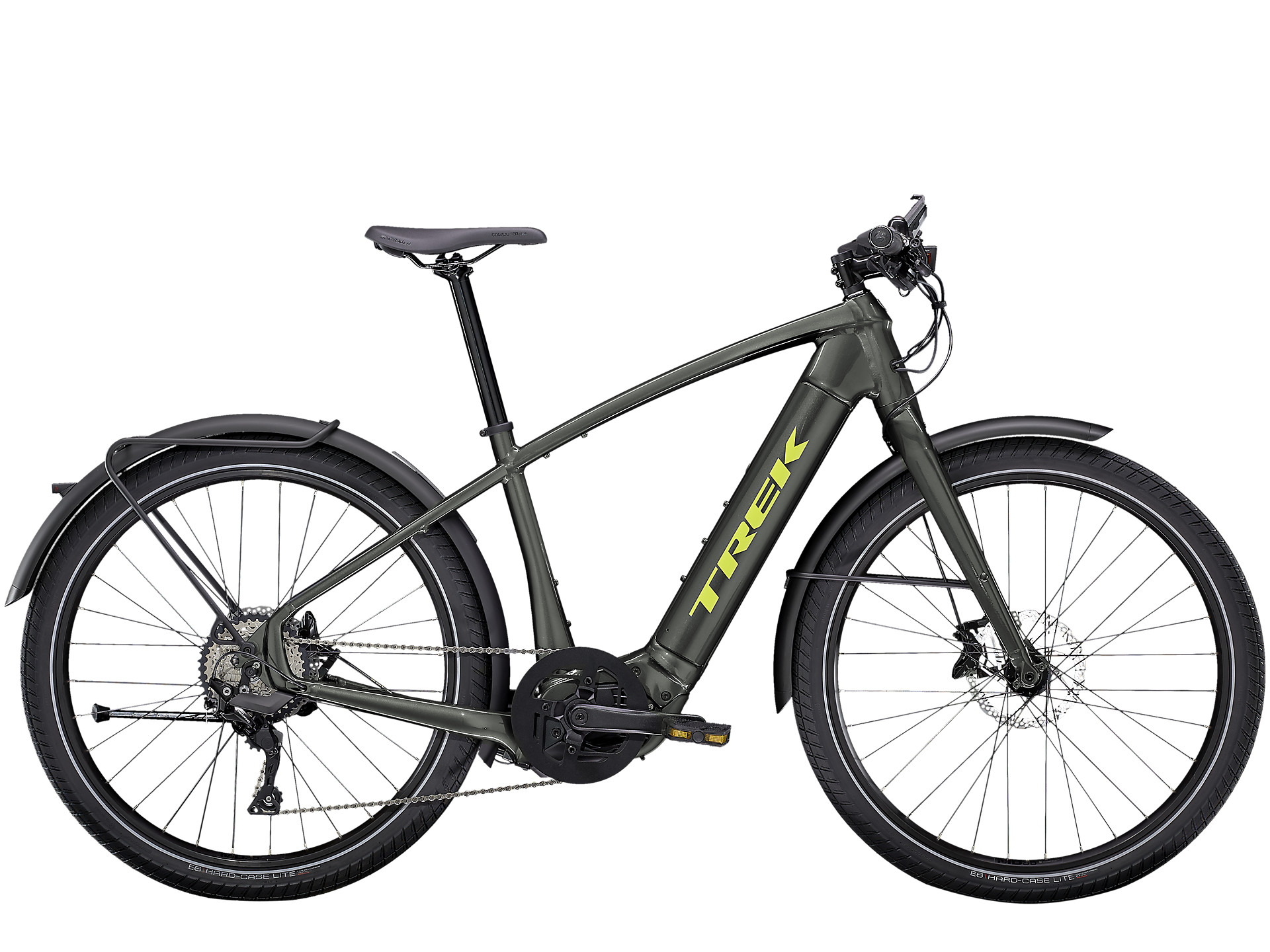
MSRP: $4,450
Weight – 56.3 lbs | Battery – 625 Wh | Motor – Bosch Performance Speed | Range – 60+ mi | Torque – 85 Nm
Trek is famous for its reliable and powerful class 3 ebikes that look modern and come jam-packed with practical accessories. The Allant+ 8s model is the perfect example of this.
This class 3 urban/commuter ebike is powered by a Bosch Performance Speed mid-drive motor that delivers 85 Nm of torque and a 625 Wh battery that will assist you for more than 60 miles per charge. You’ll easily reach the 28 mph top speed even in lower pedal assist levels.
The Shimano Deore 10-speed drivetrain is a great addition to the motor and the 4-piston Shimano hydraulic brakes are as good as you can get on any e-bike in this price range.
We also like the multi-purpose 27.5″ x 2.4″ tires that should handle well on all surfaces, including hardpacked gravel.
For those who want to commute year-round, the fenders, rear rack, kickstand, and lights are a great addition.
In other words, Trek Allant+ 8s is a high-quality class 3 ebike that has all you need for commuting, leisure, or even fitness riding.
Buy from Trek Bikes
2. Ride1UP 700 Series
Best value Class 3 electric bike with a throttle
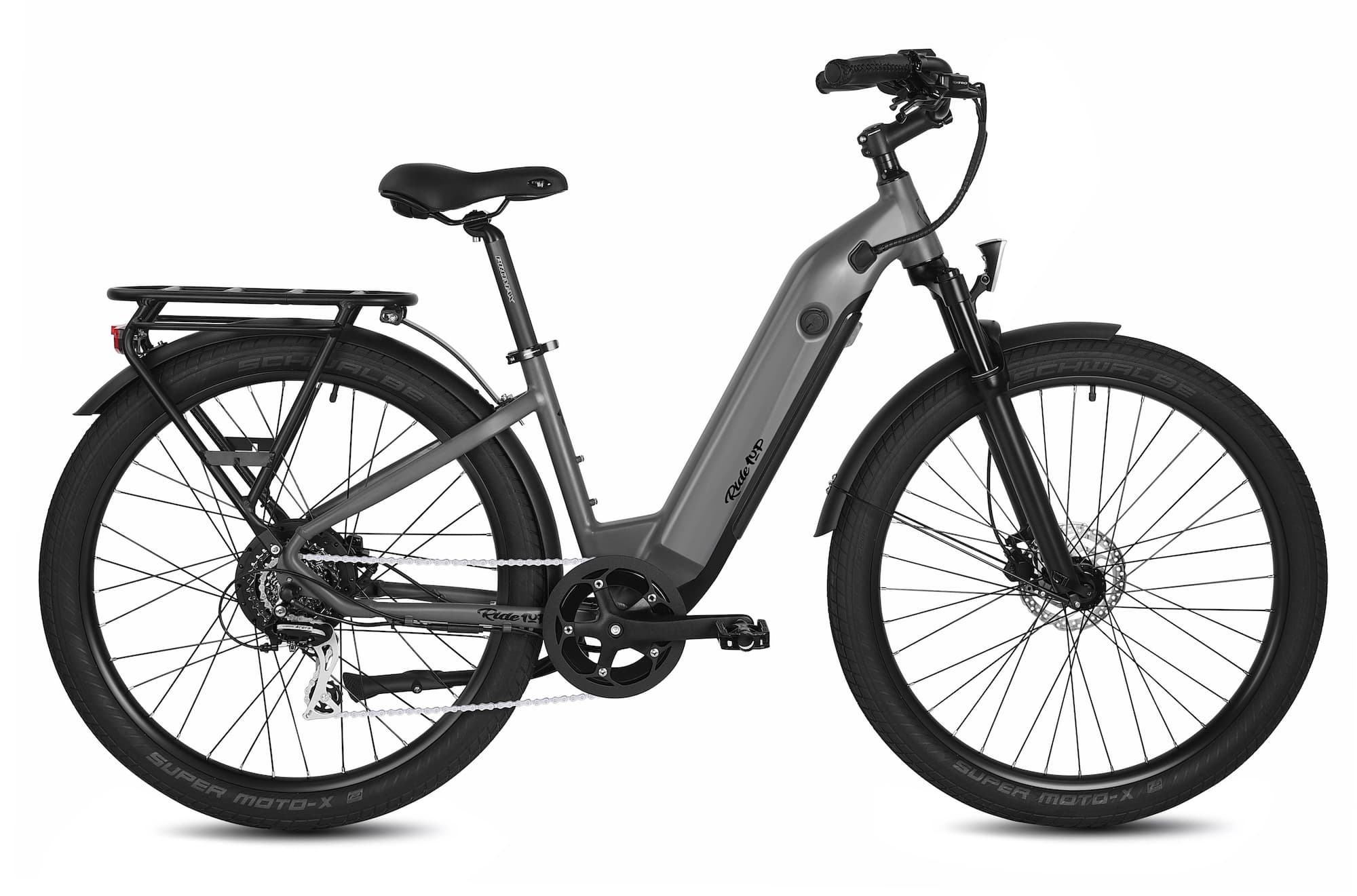
MSRP: $1,695 Ride1UP
Weight – 62 lbs | Battery – 48V 15Ah (720 Wh) | Motor – 750W | Range – 30-50mi | Torque – 60Nm
Affordable electric bikes don’t get much better than the Ride1UP 700 Series. This bargain e-bike performs way above its price, delivering a ride quality that is comfortable and powerful on varied terrains.
The 700 Series has an excellent set of components. Most notable are the front fork suspension, Tektro hydraulic disc brakes, 27.5”x2.4” tires, and a powerful 750W/60Nm motor on a solid frame that weighs 62 lbs.
Riders can choose from two models, the XR is a step-over using a more efficient riding position, whereas, the ST version uses cruiser-style geometry and handlebars with a step-through top tube to maximize comfort. Additionally, both models come with all of the essentials for convenient city riding including rear racks, fenders, and lights.
- Lightweight 6061 alloy frame
- Left side thumb throttle (up to 20mph)
- Tektro hydraulic disc brakes
- 2.4″ tires
- 1×8 Shimano Acera
Buy from Ride1UP
3. Aventon Pace 500.3

MSRP: $1,599 Aventon
Weight – 52 lbs | Battery – 48V 12.8Ah (614 Wh) | Motor – 500W | Range – up to 60 miles | Torque – 50Nm
The Aventon Pace 500.3 eBike is among the best-value Class 3 e-bikes in the sub-$2,000 category.
For 2024, the Aventon Pace 500.3 takes over the place of the original model. This new version has sleek integrated electronics, a larger battery, a more advanced color-display computer, and integrated LED lights.
The power comes from a 500W motor paired with a 614Wh battery to deliver average ranges of 60 miles and top speeds of 28mph with pedal assistance.
The groupset consists of a Shimano Altus 8-speed drivetrain and Tektro hydraulic disc brakes for reliable stopping power. Plush 2.1″ tires, ergonomic grips, a large Selle Royal saddle, and swept-back handlebars combine to deliver a smooth and relaxed ride quality from the Pace 500.3.
Add this urban cruiser to your shortlist if you want reliability, power, and comfort at an affordable price.
- Thumb throttle (up to 20mph)
- 650b x 2.1″ tires
- 1×8 Shimano Altus
Buy from Aventon
4. Lectric ONE
Class 3 electric bike with a Pinion gearbox

MSRP: $1,999 – $2,199
Weight load – 330lb | Battery – 500 Wh – 672 Wh | Motor – 750W | Range – 45-60 mi
Lectric ONE is a great urban and commuter e-bike that has premium components comparable to its more expensive competitors.
This electric bike uses an industry-leading 500 Wh or 672 Wh battery delivering high speeds at ranges up to 45-60 miles . Using the throttle riders can reach 20 mph in seconds with the 750W motor or 28 mph with pedal assistance.
However, the best thing about the Lectric ONE is the Pinion C1.6i smart electric gearbox that shifts gears automatically based on your preferences. It’s connected to a Gates Carbon Belt drive, so there’s almost no maintenance that you need to think about.
Additionally, the Lectric ONE has premium hydraulic disc brakes and a high-power headlight, giving you control and visibility in any condition.
This bike offers incredible value compared to its price, so we recommend it if you want a premium class 3 ebike with a reasonable price tag.
Buy from LectricEbikes.com
5. Cannondale Tesoro Neo X Speed
High-performance Class 3 touring e-bike

MSRP: $5,500 REI
Weight – 58.4 lbs | Battery – 625Wh | Motor – 250W | Range – 73mi | Torque – 85Nm
The Tesoro Neo X Speed is one of the best Class 3 e-bikes you can buy. It is a performance-style touring electric bicycle that flourishes on long-distance adventures.
This e-bike features a large 625Wh down tube integrated battery, Magura MT5 hydraulic disc brakes with 203mm rotors, SR Suntour Raidon 34, 100mm fork suspension, and premium Schwalbe Big Ben Plus Performance 2.15″ SnakeSkin tires. All of these components combine to make the Tesoro Neo X Speed powerful, smooth, and easy to handle .
Finally, this bike also conveniently comes with a Shimano Deore M6100, 12-speed which is durable and provides tons of range for climbing and riding with a loaded bike.
- SmartForm C1 aluminum frame
- SR Suntour Raidon 34, 100mm fork
- chwalbe Big Ben Plus Performance 2.15″ SnakeSkin tires
- Shimano Deore 12-speed
- Cannondale Ergo Touring saddle
- Magura MT5 hydraulic disc brakes
Buy from REI
6. Ride1UP Turris
Most affordable Class 3 e-bike with a throttle
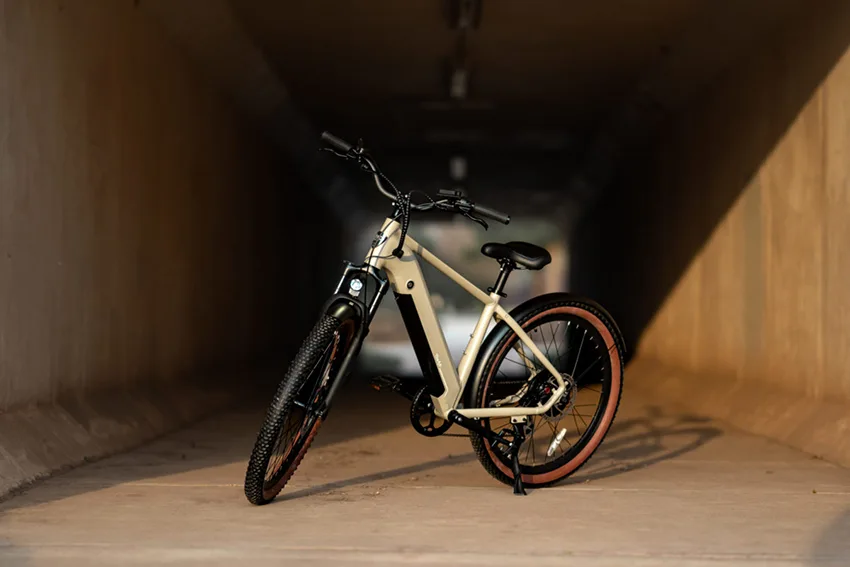
MSRP: $1,295 Ride1UP
Weight – 54 lbs | Battery – 48V 14Ah (672Wh) | Motor – 750W | Range – 30-50 mi | Torque – 60Nm
The Turris by Ride1UP is the company’s most affordable electric bicycle. It still packs a surprising punch due to its light base weight and quality components.
This cheap electric bike has an entry-level price without sacrificing ride quality. It uses a comfortable geometry along with ergonomic grips and a plush Selle Royal saddle, road-smoothing Kenda Kwick Seven.5 tires to deliver a great ride feel on urban and rural roads and paths.
The Turris has a powerful 750W motor that can reach speeds of 28 mph and offers pedal assistance for up to 50 miles using a 14 Ah battery.
This battery is sufficient for short to medium rides, depending on how much assistance you require.
Look no further than the Ride1UP Turris if you want a sleek budget-friendly e-bike that lasts!
- Smooth welded 6061 alloy fork
- Hydraulic disc brakes
- Ergonomic rubber grips
- Shimano 7-speed shifter
- Standard rack mounting points
Best Class 3 E-Bikes—Pedal-Assist Only
7. priority bicycles current.
Best mid-level class 3 e-bike

MSRP: $ 3,299 Priority Bicycles
Weight – 48 lbs | Battery – 500Wh | Motor – 500W | Range – 20-50mi | Torque – 140Nm
Priority Bicycles is a new manufacturer of premium quality electric bikes at great prices. The Current is their best e-bike and comes with powerful electronics and smooth, maintenance-free belt-drive technology.
This bike is designed to excel in urban environments and hilly rural roads. Comfort and control are of utmost importance. This model differs cuts back on the nice-to-have rack but has mounts if you want to retrofit one. The Gates Carbon belt drive and internally geared hub allow this bike to last much longer than chain-drive bikes.
The Current uses upright geometry, soft grips, a comfy gel saddle, plush 650B tires, and a mid-step frame. Using a mid-drive 500W motor, this bike is powerful and smooth. A large 500Wh battery lasts between 20 and 50 miles, delivering excellent torque of 140Nm, allowing riders to tackle any hills with ease.
- 500w mid-drive torque-sensing motor, 140Nm
- Hydroformed 6061 aluminum frame and fork
- Shimano Inter-5 internal hub or Enviolo Sportive hub
Buy from Priority Bicycles
8. Rad Power Bikes Radster
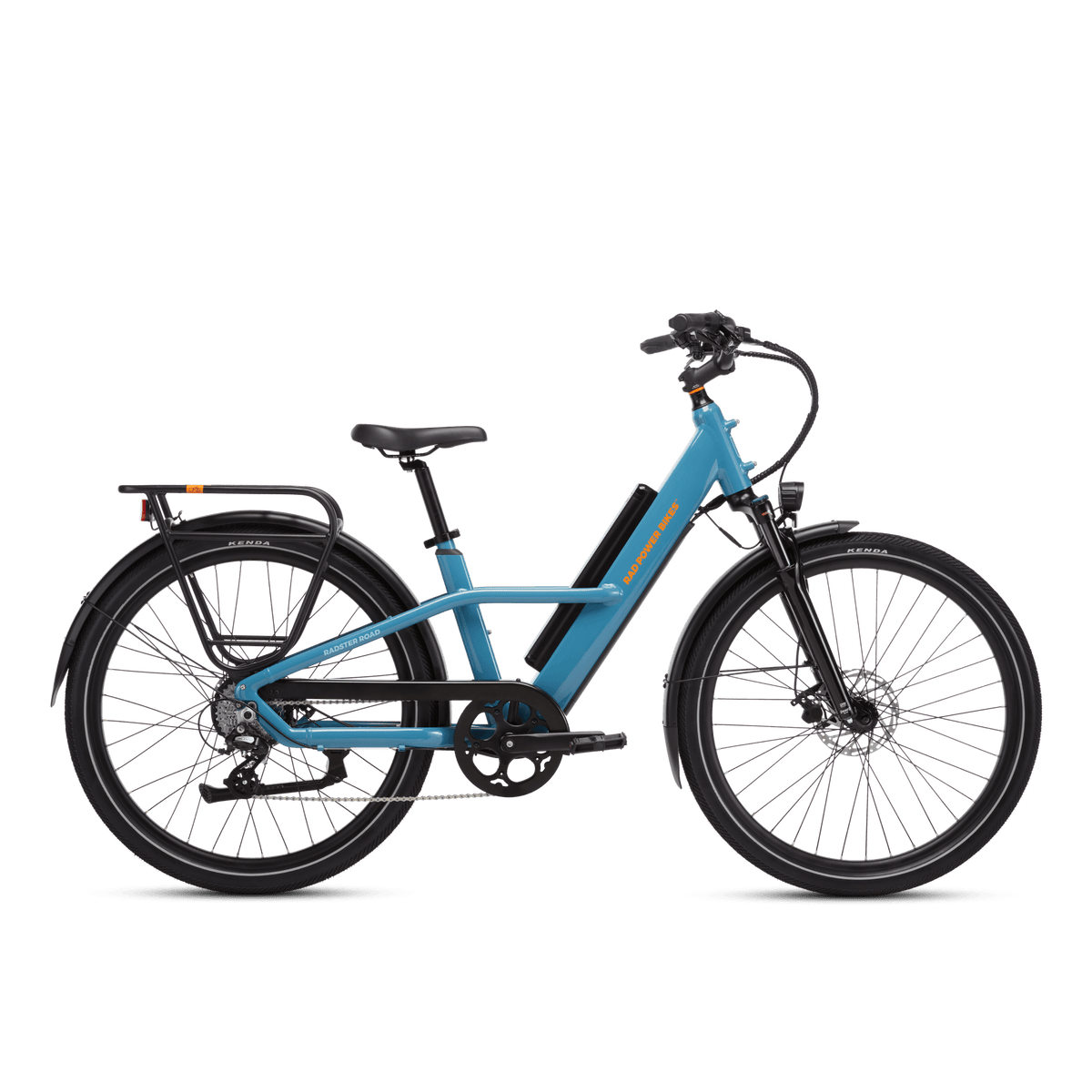
MSRP: $1,999
Weight – 74.5 lbs | Battery – 720Wh | Motor – 750W | Range – 25-65mi | Torque – 100Nm
The Rad Power Bikes Radster is top of the bunch when it comes to all-around electric bicycle performance. It offers unbeatable convenience and ride quality for long days with a fully loaded bike.
This Radster e-bike features the typically relaxed urban bike geometry, along with versatile Kenda Kwick Series 29″ X 2.2″ wheels and tires, making it ride smoothly on bumpy roads. Additionally, it comes with hydraulic disc brakes that provide reliable stopping power in all conditions.
To make urban commuting more practical, this bike is fitted with a high-capacity rear rack that is compatible with various accessories. In addition, you have full fenders, integrated headlight and taillights, and a handy kickstand.
Finally, the Rad Power Bikes Radster electric bike uses a 720Wh down tube-mounted battery. This battery pairs with a 750W rear hub motor that provides 100 Nm of torque to deliver excellent power and acceleration for up to 65 miles of pedal assistance.
- Aluminum frame
- Weight – 74.5 lbs
- 1×7-speed Shimano
Buy from Rad Power Bikes
9. Cervelo Rouvida
Class 3 electric gravel bike
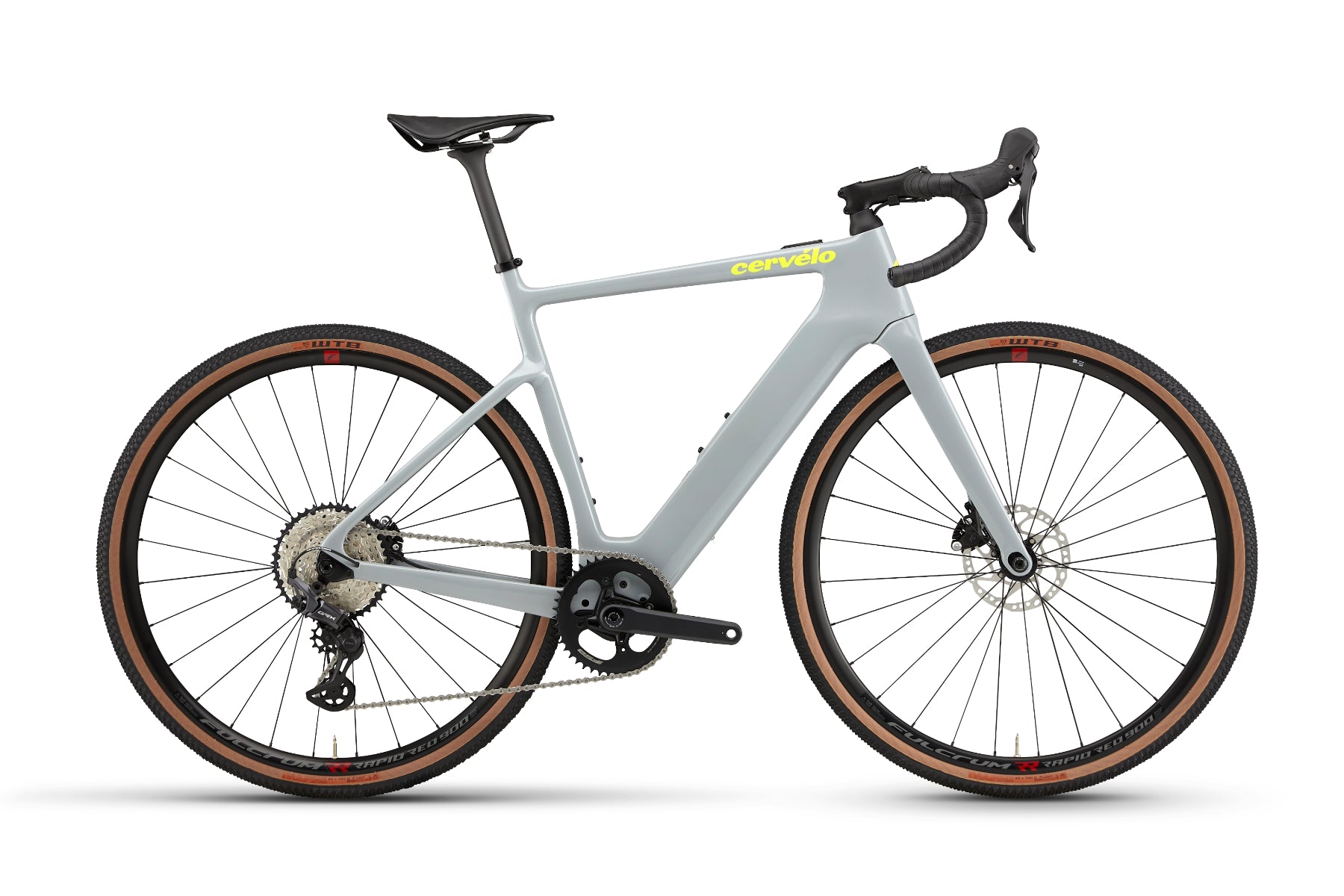
MSRP: $6,200
Weight – 27.3 lb | Battery – 430 Wh | Motor – Fazua Ride 60 | Range – N/A | Torque – 60 Nm
The Cervelo Rouvida electric gravel bike is the perfect choice for a range of bikers looking for the benefits of a huge range and power to assist them on trails or tarmac.
This Class 3 e-bike comes with a lightweight carbon frame and carbon fork, WTB Vulpine TCS 700c x 40 mm tires, and powerful Shimano GRX hydraulic disc brakes. This combination makes the Rouvida one of the most effective e-gravel bikes on the market.
You can rely on the supreme Fazua Ride 60 motor to power it, delivering 60 Nm of torque and 250W. Paired with an integrated 430 Wh battery, riders can achieve speeds up to 28 mph.
Additionally, riding is easy when you have a precision Shimano GRX 12-speed drivetrain to rely on with plenty of gearing options using an 10-45t cassette.
- Carbon frame and fork
- 700c x 40 mm tires
- Fazua e-bike system
Buy on MikesBikes.com
10. Specialized Turbo Vado 3.0
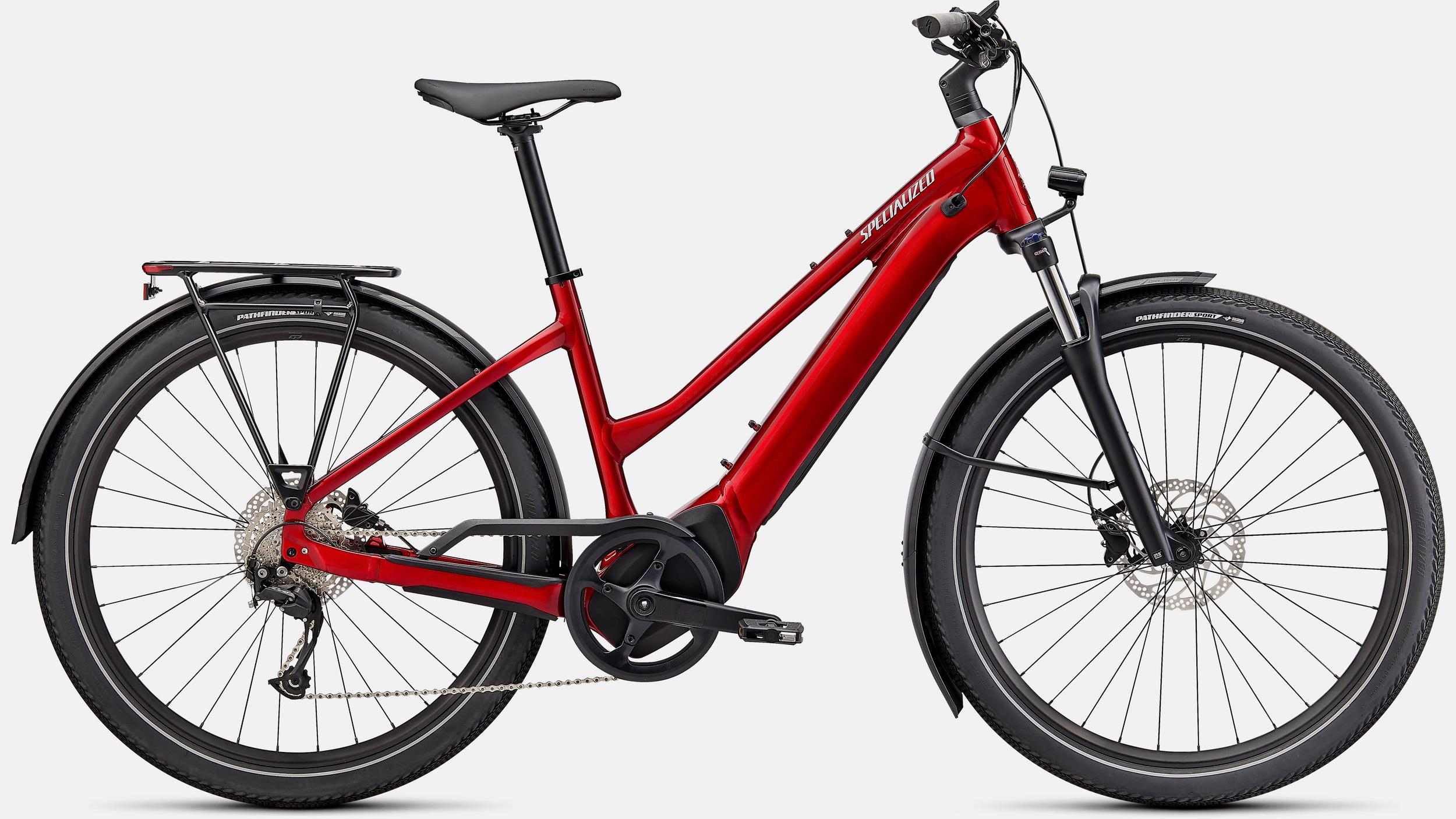
MSRP: $3,250
Specialized is one of the leading manufacturers specializing in electric bikes of all kinds. The whole Turbo Vado range showcases the best of Specialized’s engineering that is evident in the ride quality and durability of their urban e-bikes.
The Turbo Vado 3.0 ebike comes with a powerful Specialized’s proprietary mid-drive motor that’s paired with a 530 Wh battery. You get a 28 mph maximum speed and a 68-mile range per charge.
The Turbo Vado 3.0 also boasts a Shimano Alivio 9-speed rear derailleur and rather basic Shimano MT200 hydraulic disc brakes. However, they get the job done for urban rides without any problems.
What we also like about this Specialized’s e-bike is the fact it comes equipped with all the accessories you need for commuting, such as a rear rack, fenders, lights, and even a kickstand.
Specialized has clearly put a huge amount of thought and design into their premium range of e-bikes, covering absolutely everything to make their bikes the perfect companion for urban travel.
Buy on Specialized.com
11. Cannondale Adventure Neo Allroad Speed
The best affordable electric hybrid bike on the market

MSRP: $2,025 REI
Battery – 720Wh | Motor – 750W | Range – 67mi | Torque – 80 Nm
The Cannondale Adventure Neo Allroad Speed is the brand’s most affordable electric hybrid . This bike focuses on comfort, speed, and versatility, delivering one of the most exciting ride experiences a cyclist could ask for.
The Adventure Neo Allroad Speed features a SmartForm C3 aluminum frame, one of the best on the market, helping to make it one of the toughest class 3 e-bikes around. The frame also has internal routing and comes equipped with fenders and a rear rack for daily commutes.
This Cannondale e-bike has a 1×8 microSHIFT Acolyte drivetrain , allowing riders to achieve smooth shifting and pedal efficiency. The BAfang motor provides pedal assistance for up to an incredible 67 miles using a semi-integrated 720Wh battery.
Finally, Cannondale used Kenda Booster tires, a comfortable saddle, and upright geometry to make this bike unbeatable in almost every way for commuters and bicycle tourers alike.
- 1×8 microSHIFT Acolyte
- 27.5 x 2.4″ tires
- Fenders and rear rack
12. Gazelle Ultimate C380+
Best urban Class 3 eBike
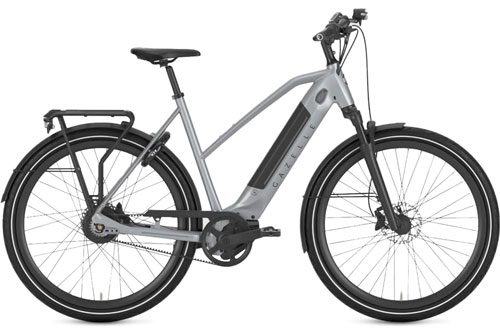
MSRP: $5,000 Mike’s Bikes
Weight – 55.6 lbs | Battery – 500Wh | Motor – 250W | Range – 20-55mi | Torque – 75Nm
The Gazelle Ultimate C380+ electric bike is consistently top of the market for quality and durability. This urban e-bike is their most sporty.
This versatile electric bike was designed with supreme ride quality, solid range, and power at the forefront of thought.
It integrates a Bosch Performance Line Speed Gen 4 motor and aluminum frame, premium Shimano BR-MT420 four-piston hydraulic disc brakes, and a 500Wh integrated downtube battery to deliver a solid range of up to 55 miles.
The Ultimate C380+ comes perfectly suited to urban travel or long-distance rides. It comes with clean internal cable routing, fenders, a rack, and battery-powered head and taillights. Additionally, the Schwalbe Energizer Plus 47mm tires balance comfort and speed, making for an excellent all-rounder bike.
All this and more make the Gazelle Ultimate C380+ the ideal bike for any road or light gravel riding.
- Frame Material: 6061 Aluminum
- Shimano hydraulic disc brakes
- 47mm Schwalbe Energizer Plus tires
- Enviollo Trekking hub, 380% gearing range
Buy at Mike's Bikes
13. Electra Vale Go! 9D EQ Speed
Best electric cruiser bike
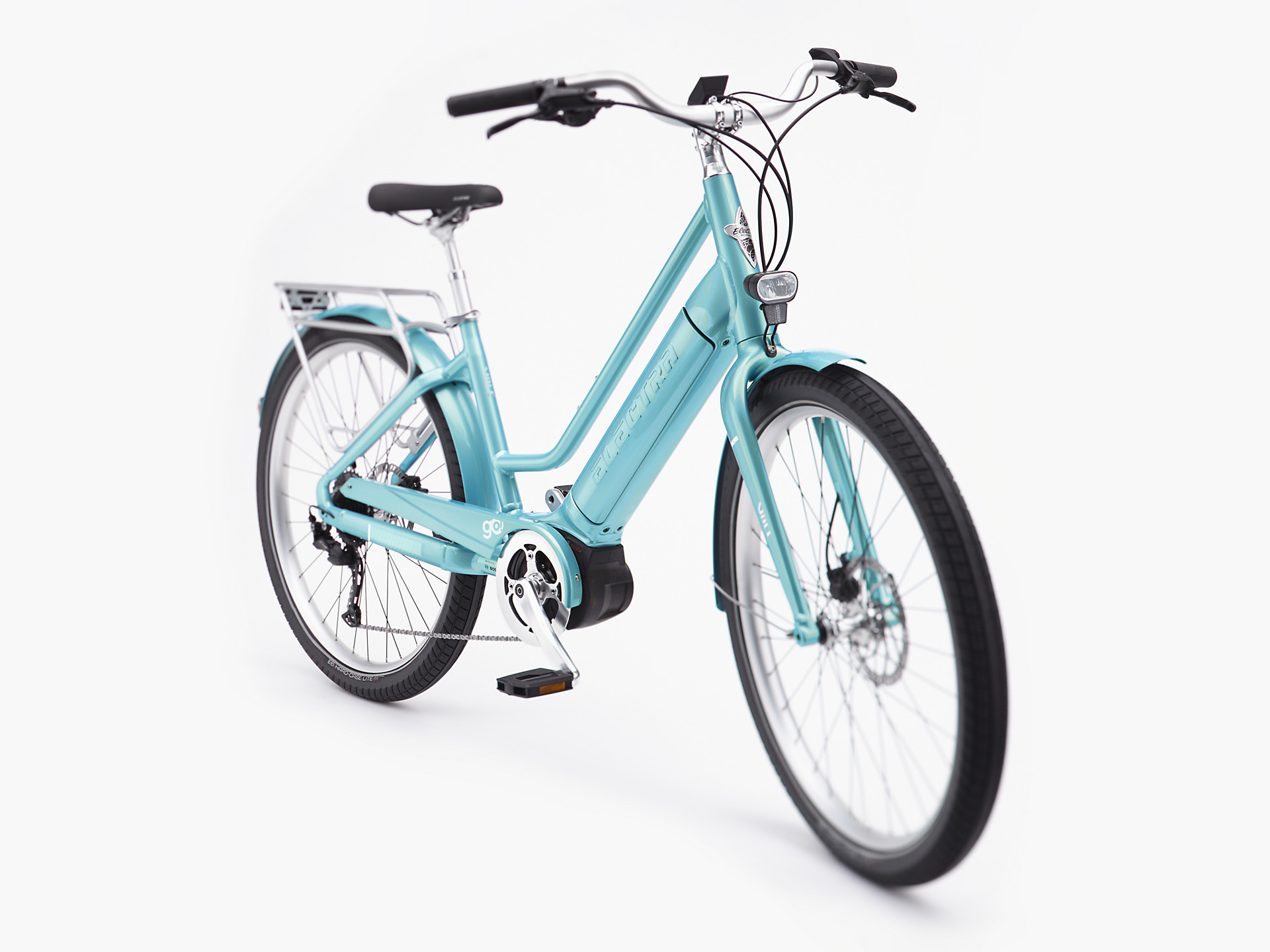
MSRP: $3,750
Weight – 53.7 lbs | Battery – 500Wh | Motor – 250W | Range – ~60mi | Torque – 75Nm
The Electra Vale Go! 9D EQ Speed is uniquely gorgeous in its design, while also being exceptionally comfortable and fast.
This premium cruiser e-bike is ready for absolutely in the city. It comes with an aluminum frame, Tektro hydraulic disc brakes, and a powerful Bosch Performance Line Sport motor, assisting riders to 28mph in seconds for a max distance of 60 miles, using the 500Wh battery.
The Vale Go! 9D EQ Spee has 2.4″ puncture-resistant tires on 27.5″ wheels, 40mm travel fork suspension, mustache handlebars, and a plush saddle. Electra also provides a rack, fenders, and lights for those with commuting needs.
Finally, this stylish e-bike uses a reliable Shimano Alivio 9-speed drivetrain with a modest range of gears suitable for city riding.
- Frame – 6061 aluminum
- Tires – Bontrager E6 Hard-Case Lite 27.5×2.4″
- Brakes – Tektro hydraulic
- Drivetrain – Shimano Alivio 9-speed
E-Bike Classification
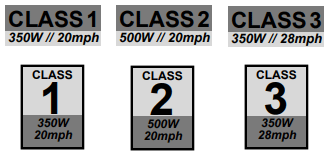
Electric bike manufacturers have to apply a permanently affixed label. The label should contain the classification number, top assisted speed, and the wattage of the motor.
With the explosion in the popularity of e-bikes in recent years, manufacturers and legislators have developed a classification system. This system helps legislators distinguish between the different power outputs (W), max speeds, and the presence of a throttle, thus allowing different legislation to apply to each class.
In Europe, class 3 e-bikes have been assigned to the same motor vehicle class as mopeds/scooters, limiting these bikes to 500W. However, in the USA, none of the states have yet made this designation, although there are some variations in regulations by state, which we cover later.
- Class 1 bikes are not fully electric, don’t have a throttle, and rely on pedaling in order to activate the motor. The motor stops assisting at 20mph, meaning these bikes have greater ranges than classes 2 and 3.
- Class 2 models have a throttle, this means they can be used as fully electric bikes without pedaling. They also have a top speed of 20mph at which the motor stops assisting the rider.
- Class 3 e-bikes may or may not have a throttle, have max speeds of 28mph, and have the most legal restrictions such as age limit and helmet requirements.
- You may also like: Electric Bike Rules & Regulations in the US
Are Class 3 eBikes Legal?
Yes, Class 3 e-bikes are legal in the USA . However, the regulations on this type of bike vary by state and area. Electric bikes are not currently subject to any licensing, registration, or insurance requirements in the USA, although they are in Europe.
In general, Class 3 electric bicycles can be ridden on streets and roads where traditional bicycles are permitted, including bike lanes. However, there are possible restrictions in areas such as multi-use paths. Additionally, Class 3 electric bicycles also have additional requirements including a minimum age for users and helmet requirement.
Conclusion—Class 3 E-Bikes Are Fun, Fast and Practical
The decision of whether or not to buy a Class 3 e-bike versus Class 1 or 2 bikes is mostly down to what you need it for and your preferences as a cyclist.
This type of bike, especially models with a throttle, is perfectly suited to those who want power and speed. Because they are so powerful, many people can seriously consider swapping their car for a Class 3 electric bike, potentially saving you a lot of time and money, and arriving to work dry.
The speed of 28mph is also considerable. Any cyclist who enjoys a fast ride without having to be super fit to do so will enjoy this type of bike too. Finally, you can load up a Class 3 e-bike with groceries or other cargo without even stressing the motor.
In the end, these bikes are usually a considerable investment, but we believe they provide a unique function by making exploring and commuting on two wheels accessible to almost any person at any age (above 17 of course).
So if you’re considering a Class 3 e-bike as your next bike, we’re sure you won’t be disappointed with any of the excellent options we’ve described above.
Share this on:
About the Author

Jordan Grimes
9 thoughts on “ best class 3 e-bikes you can buy in 2024 [28 mph top speed] ”.
typo in review of Ride1UP 700 Series refers to Ride1UP **500** Series
Thank you for letting us know, Bob. We’ve corrected the typo.
The class 3 ebikes shown here are the one mostly for on road and not really mountain climbers. Do you have any class 3 ebike that are full suspension, mid drive with throttle?
We try to keep our eyes opened and update this post weekly, but in the meantime you can check out something from more expensive, fat tire electric hunting bikes .
Lol where is Gazelle…..you lost my respect…….do your homework…..r u paid buy manufacturers for this. I think the vado is 1st or 2nd but followed by Gazelle t10+ ultimate…..one of the best bike manufacturers in the world, let alone ebikes didnt make it…….this is sad. I dont want a top lost if u didnt test everything this is trash.
Sorry for your loss of expectations. We’ve previously added the Gazelle to Best Class 1 eBikes (Where it belongs – 20mph).
Gazelle makes three class 3 ebikes.
This was excellent and very informative, I’ve a lot to consider in making my choice and this will help
Does anybody know what a B52 Bike is? I have one, it’s a full suspension Mountain Bike from Australia, 4500 watt battery Crystalyte hub motor, 9 speed sequential transmission, and will go 50mph. Of course I don’t ride it that fast. Stealth Bikes. They have distributors in the US. You’ll need a Versahaul Motorcycle carrier to transport it. It weighs 120 lbs. The manufacturer is Stealth Bikes of Australia. Mine is the bomber version , a fighter version is also available . Much Lighter!
Leave a Reply Cancel reply
Your email address will not be published. Required fields are marked *

MOCC - Motorboat Operator Certification Course
Course session.
NOTE: The Motorboat Operator Certification Course is scheduled through the Regional Watercraft Safety Coordinators. View CLASS DATES/LOCATIONS and the contact person for your region. DO NOT SUBMIT AN APPLICATION THROUGH DOI TALENT FOR THIS COURSE.
Summary and Objectives:
This course gives participants the training required to permit the operation of Service-owned watercraft. It reviews minimum requirements for safe operation of motorboats and includes a review of legal requirements, preparations, navigation, operations, emergency procedures, rescue, self-rescue, trailering, fire suppression, and basic seamanship. The course includes both classroom and on-the-water instruction. There is an on-the-water practical exam during which the student must demonstrate certain skills to pass as well as a written exam with a passing grade of 70 required.
Upon completion of this course, participants will be able to:
- Provide attendees with specific skills and knowledge that will allow them to make an informed decision about their own safety, the safety of any crew member, as well as the safety of the vessel.
- Familiarize attendees with state-of-the-art watercraft safety equipment and other gear, through demonstration and actual use.
- Allow attendees to demonstrate, through written examination and physical demonstration, that they have an adequate grasp of motorboat handling techniques and knowledge to safely operate a motorboat in a normal work environment.
Questions and Registration
Course contact.

Upcoming Sessions of this Course
Session date and time Wed, 10/16/2024 - 08:00 - Thu, 10/17/2024 - 17:00 (EDT) Location Classroom BISC
*DOI PIV card holders may use the button above to register for courses directly in DOI Talent. If you are not affiliated with DOI, follow instructions for External, Non-DOI learners to obtain an account. Need help for registration, contact session contact.

- End Suction Pump
- Multi-Stage Pump
- Pitot Tube Pump
- Centrifugal Drum Pumps
- Self-Priming Pump
- Submersible Pump
- Split Case Pump
- Vertical Inline Pump
- Vertical Turbine Pump
- Air Operated Diaphragm Pump
- Hose/Peristaltic Pump
- Positive Displacement Drum Pump
- Piston Pump
- Plunger Pump
- Dosing Pump
- Progressive Cavity Pump
- Rotary Lobe Pump
- Twin Screw Pump
- More Products
- Water Pressure Booster Skids
- Chemical Mixing and Delivery Skids
- Makedown Skids
- Water Treatment and Filtration Skids
- Equipment Repair
- Installation and Startup
- Water and Wastewater Treatment Repair
- Food & Beverage Equipment
- Water/Wastewater
- General Industry
- Pulp & Paper
- Chemical & Petrochemical
- Power Generation
- Pharmaceutical
Resource Library
Video Library
Success Stories
- Headquarters, Kimberly, WI
- OptiFlow, Kimberly, WI
- Burnsville, MN
- Grand Rapids, MN

Divisions and Classes on Motors – What Do They Mean?

One of the largest safety concerns in an industrial plant is the occurrence of a fire or explosion. If potentially dangerous gases or vapors are present in your application, you need an explosion-proof motor. It can be a seemingly challenging task to select the proper motor, but we’re here to help! Thankfully there are divisions, classes and groups that help to narrow down your selection.
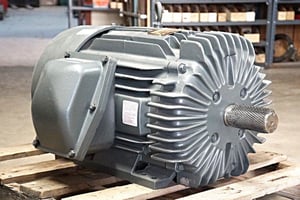
The first step in choosing an explosion-proof motor is to define its division. The motor’s division classifies how often the potentially explosive materials are present during normal operating conditions. There are only two divisions for motors in hazardous areas.
Division 1: Ignitable concentrations are present all or most of the time. This includes during frequent maintenance, equipment failure or repair work.
Division 2: Ignitable concentrations are not likely to be present during normal operation. The hazardous materials might be handled or processed, but are normally in closed containers or closed systems that could only be exposed during an accident or failure of that container or system.
For example, let’s think about a gas station. The underground tanks and gas pumps themselves are classified under division 1 because they are directly handling the potentially-explosive materials. The rest of the near-by gas station components should be classified under division 2 because they might be exposed to the potentially-explosive materials at any time.
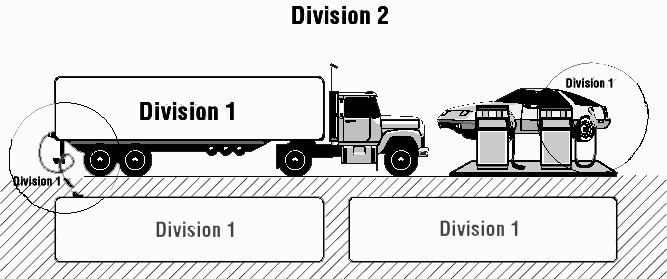
Classes and Groups
Next, you need to determine the hazard class of the potentially explosive materials you’re dealing with. These hazards are separated into three different classes. You must select a motor that is properly classified for your specific application.
Class 1: Locations with flammable gases, vapor and liquids
Class 2: Locations with combustible dusts
Class 3: Locations with ignitable fibers and flyings
The Class 3 motor is the least common and isn’t divided any further into groups. However, Class 1 and 2 motors are grouped by your specific hazardous substance. The most common groups and materials are listed below.
Group A: Acetylene
Group B: Hydrogen, Butadiene, Ethylene Oxide, Propylene Oxide, Acrolien
Group C: Ethylene, Cyclopropane, Ethyl Ether
Group D: Propane, Acetone, Ammonia, Benzene, Butane, Ethanol, Gasoline, Hexane, Methanol, Methane, Naptha, Natural Gas, Toluene
Group E: Combustible Metal Dusts (Aluminum, Magnesium Commercial Alloys)
Group F: Combustible Carbonaceous Dusts (Coal, Carbon Black, Charcoal, Coke Dusts)
Group G: Other Combustible Dusts (Flour, Grain, Wood, Plastic, Chemicals)
Temperature Class (T Code)
The “T” Code identifies the maximum absolute motor surface temperature that will be developed under any operating condition. This is not a value that you will choose, but instead the result based on the division, class and group. This is important to note because the motor you end up with should have a maximum surface temperature that is below the ignition temperature of the potentially explosive material in the hazardous area.

Once you’ve determined the division, class and group of your motor, you’re ready! Use those ratings/values to select the proper motor for your hazardous application. Be sure to involve the safety members at your facility so they can give input as to what ratings are required. If you’re in Upper Michigan or Wisconsin, we can get you the right motor… just contact us !
Talk To Our Team
Industrial Pumps, Drives & Monitoring
Industrial Valves & Valve Automation
Seals & Couplings
Filters & Strainers
Industrial Mixers
Water/Wastewater Processing Equipment
Skid Systems
Sanitary Cleaning Systems
Heat Exchangers
PUMP SKID SYSTEMS
Skid System Packages
Skid Systems By Market
Skid System Store
Skid System Repair Services
OEM Pump & Valve Rebuilds & Repairs
Installation & Startup
Predictive & Preventive Industrial Pump Maintenance
Water/Wastewater Treatment Equipment Repair
Emergency Pump Repair
Flex Support Program
John Crane Seal Repair
Root Cause Analysis
Skid System Refurbishment
Valve Automation
Floor Coatings
Headquarters and Service Center Located outside Green Bay, WI 707 Ford Street Kimberly, WI 54136 920-733-4425
OptiFlow Design and Build Center 1002 Truman Street Kimberly, WI 54136 920-733-4425
Burnsville Service Center 12265 Nicollet Avenue Burnsville, MN 55337 952-444-1949
Grand Rapids Service Center 26489 Industrial Blvd Cohasset, MN 55721 952-444-1949
© Copyright 2024. Crane Engineering. All Rights Reserved. Privacy Policy .
:format(webp)/cdn.vox-cdn.com/uploads/chorus_asset/file/25299082/Gazelle_Eclipse_C380_HMB__45_.jpg)
:format(webp)/cdn.vox-cdn.com/uploads/chorus_asset/file/25299087/Gazelle_Eclipse_T11_HMB.jpg)
:format(webp)/cdn.vox-cdn.com/uploads/chorus_asset/file/25299098/Gazelle_Eclipse_C380_HMB__30_.jpg)
:format(webp)/cdn.vox-cdn.com/uploads/chorus_asset/file/23986648/acastro_STK086_03.jpg)
:format(webp)/cdn.vox-cdn.com/uploads/chorus_asset/file/25329652/Sky_Purple_Metallic_Taycan_Turbo_GT_A1_04320A_045.jpg)
:format(webp)/cdn.vox-cdn.com/uploads/chorus_asset/file/23932655/acastro_STK106__01.jpg)
:format(webp)/cdn.vox-cdn.com/uploads/chorus_asset/file/25323325/image000000__1_.jpeg)

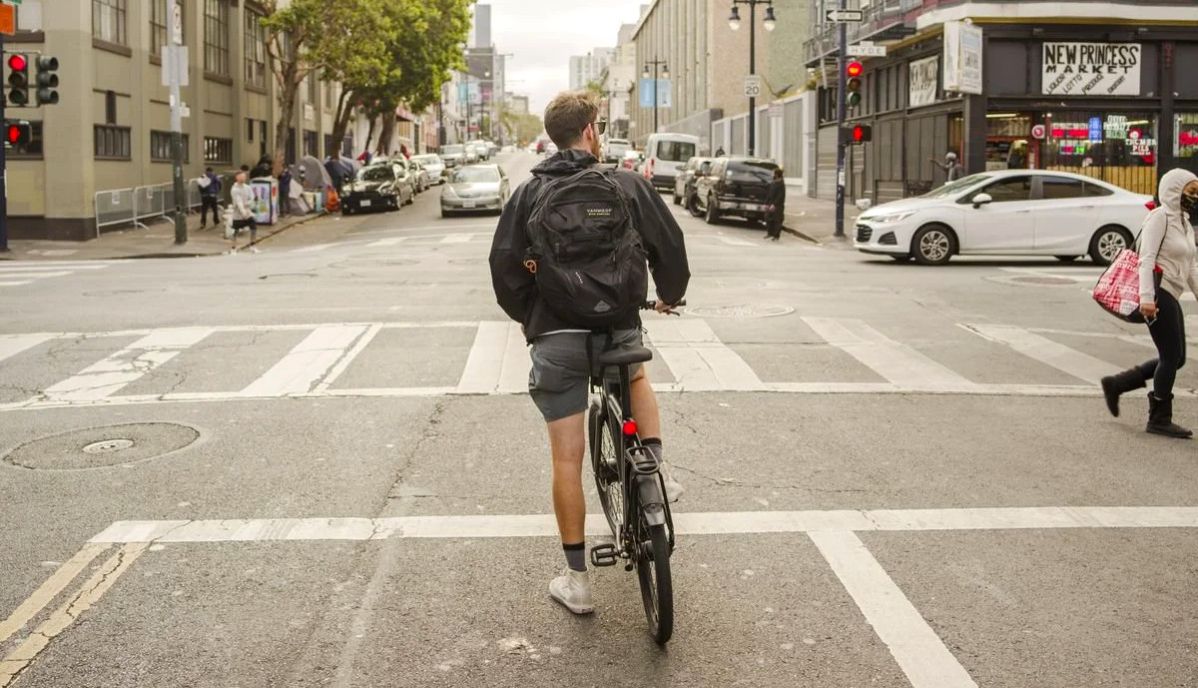
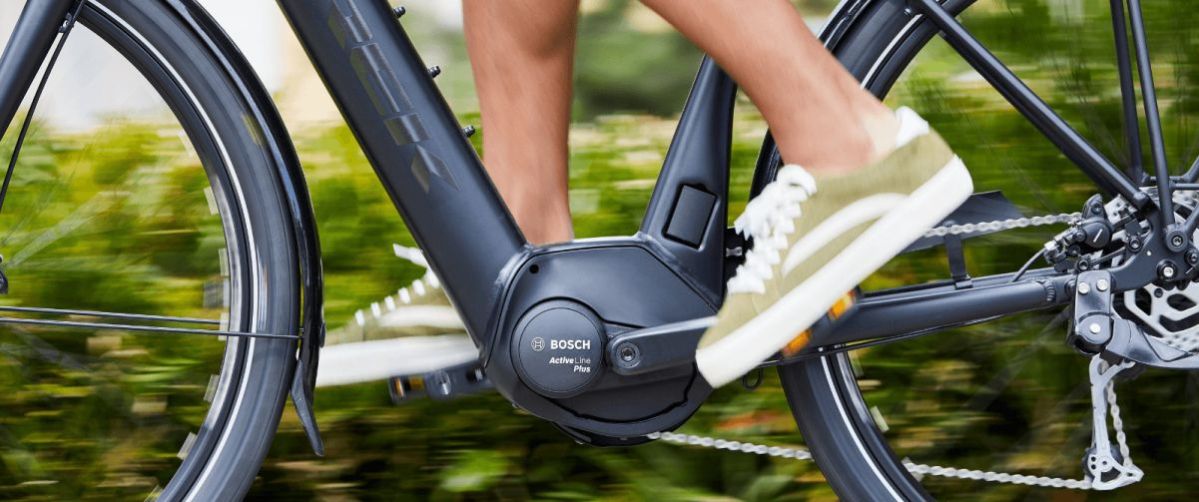

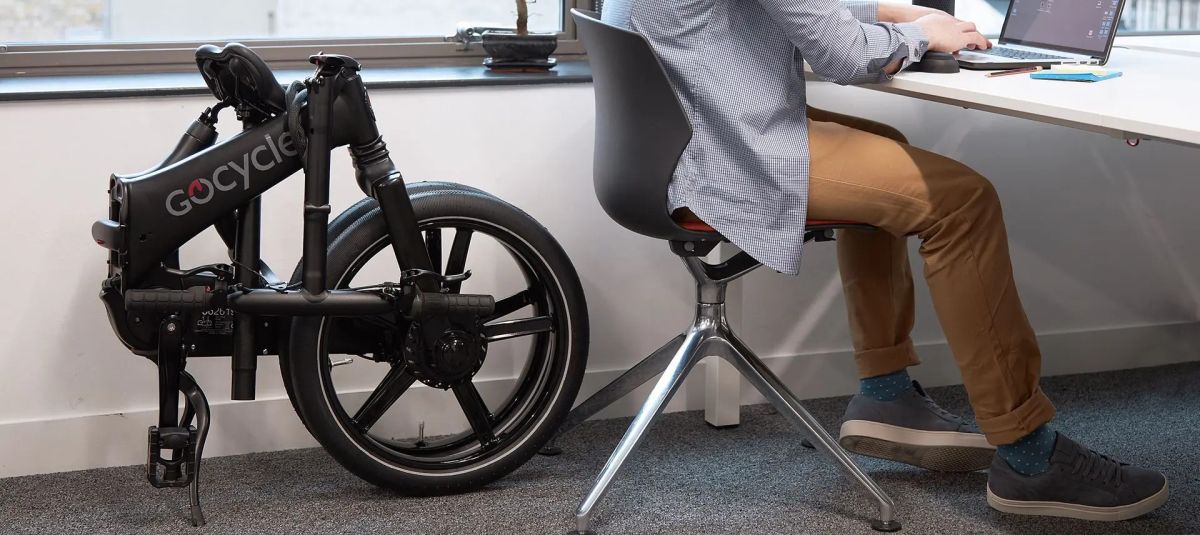
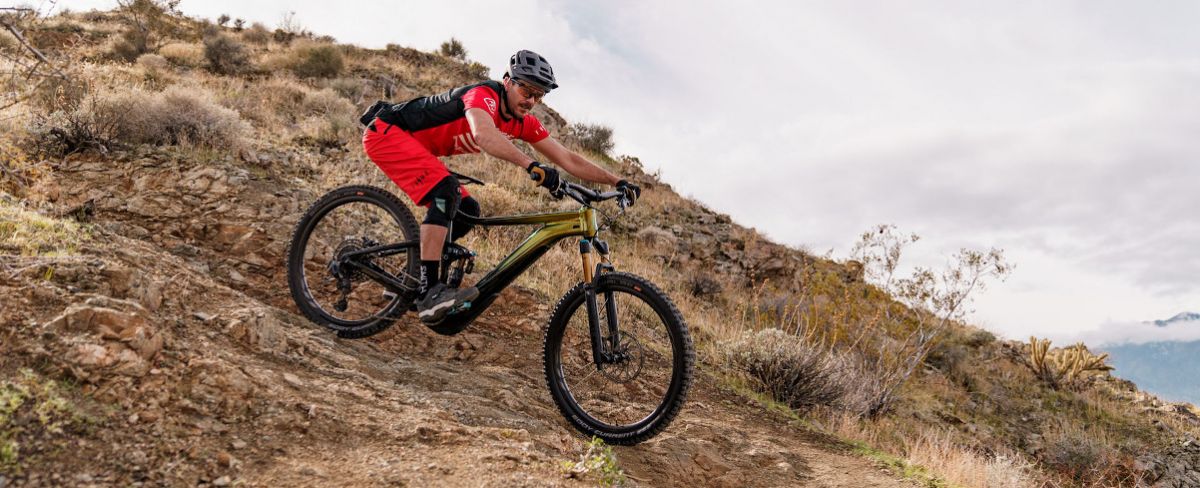

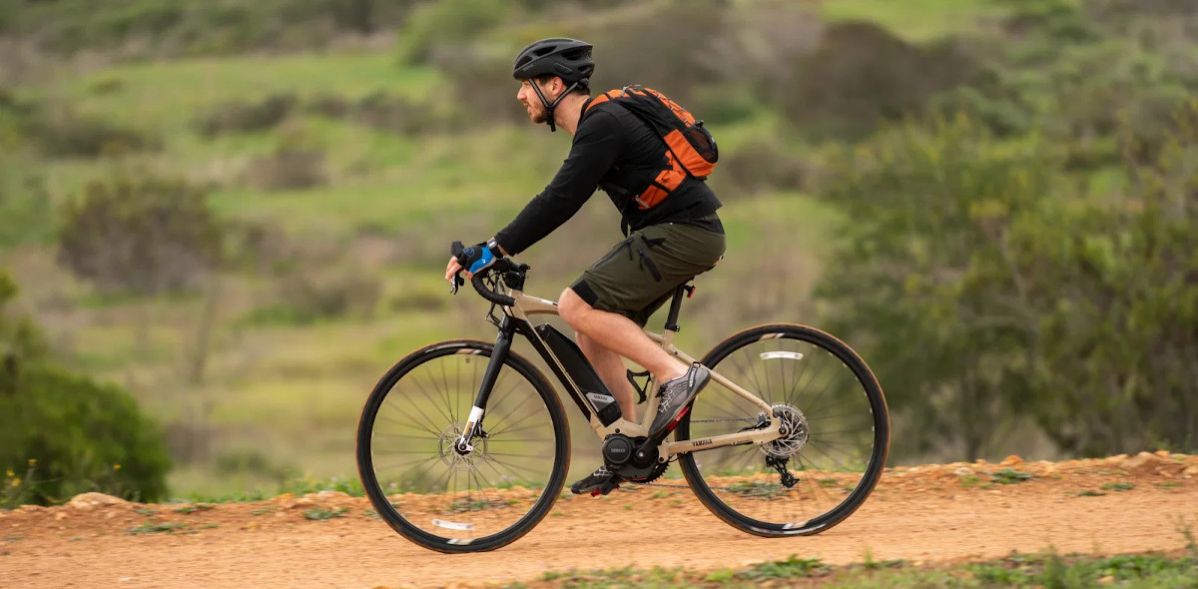

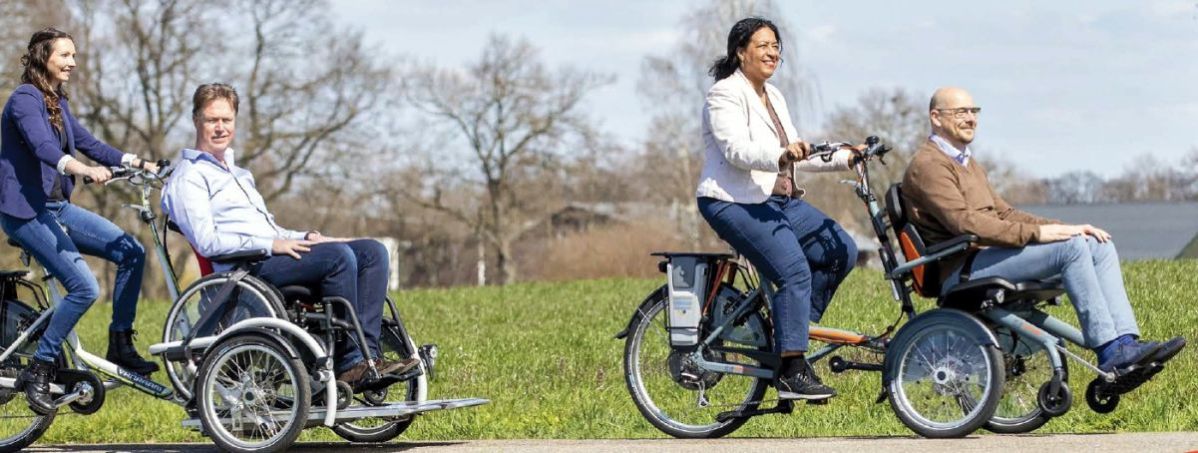
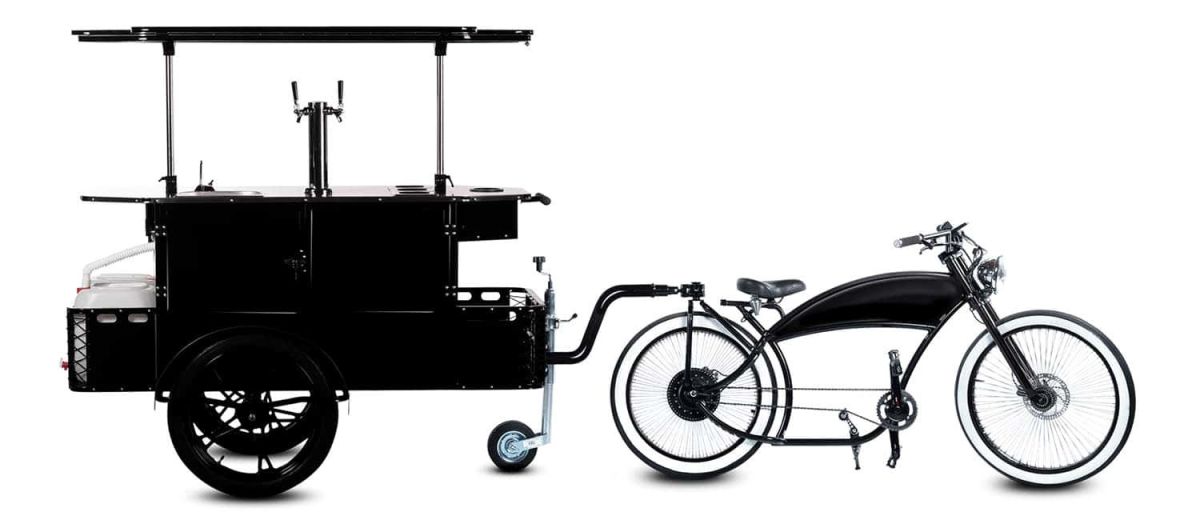

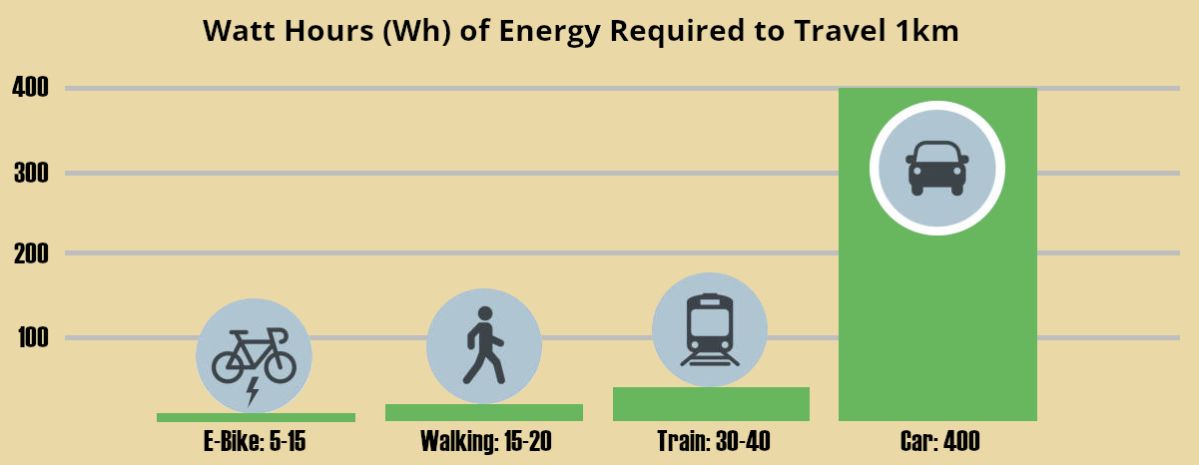




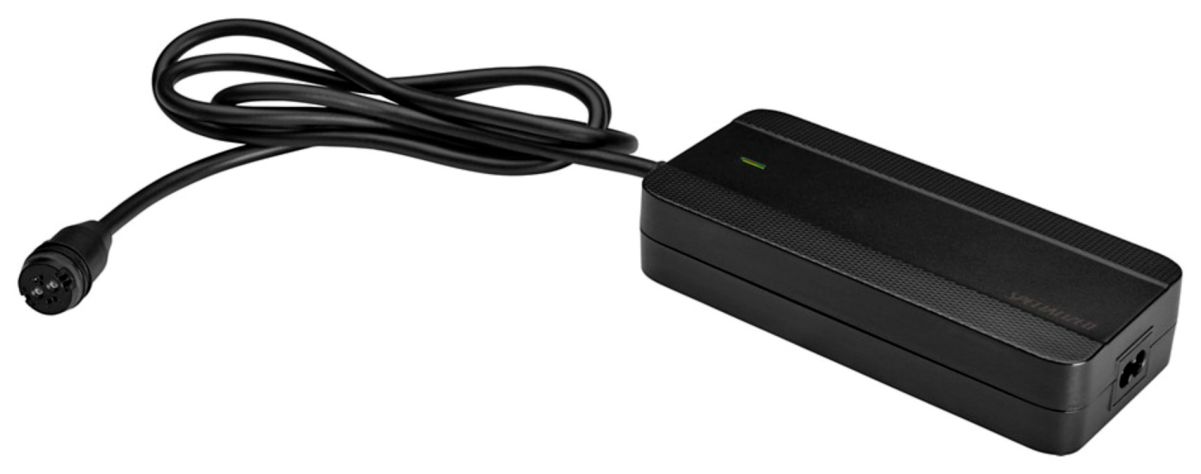

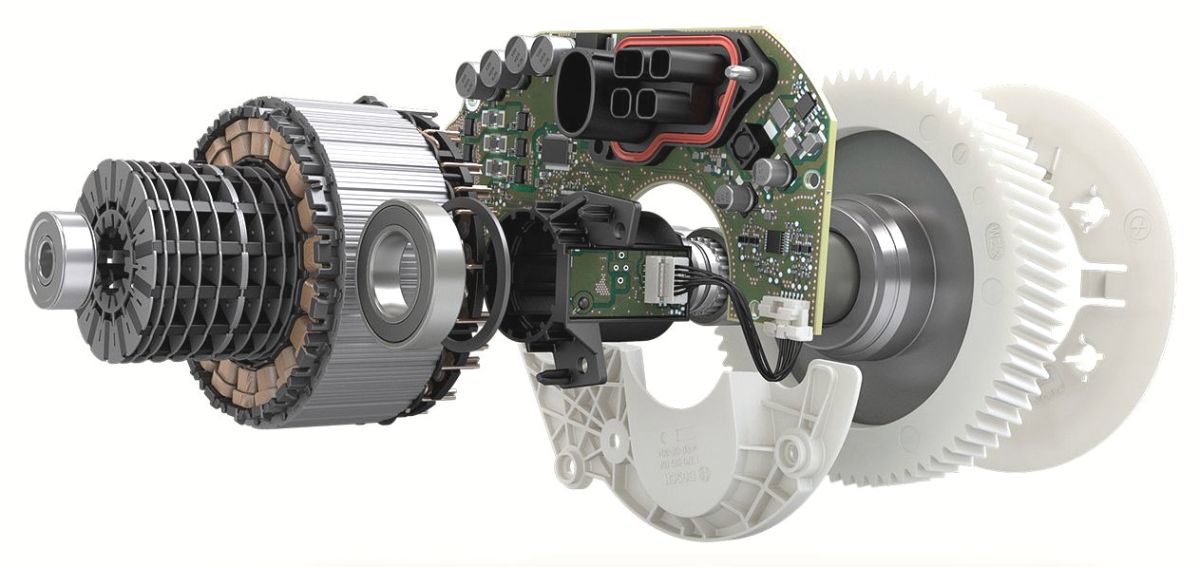


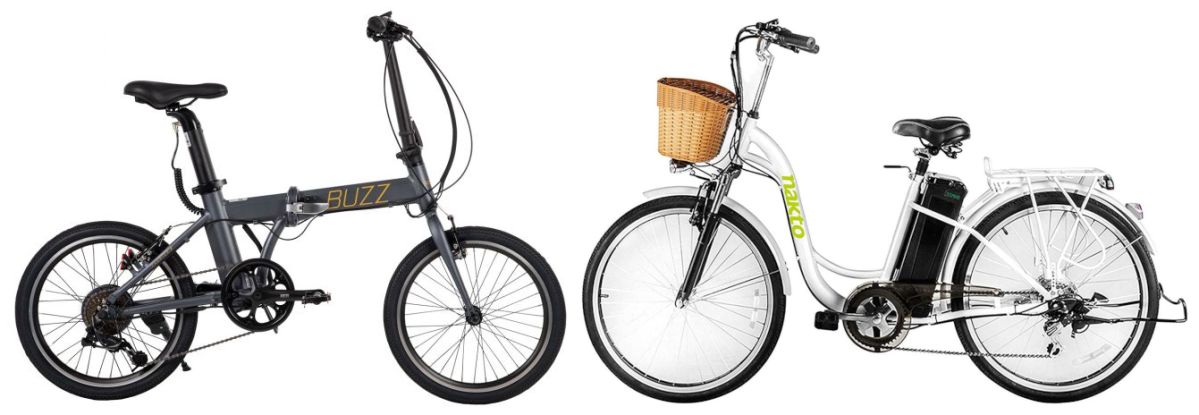


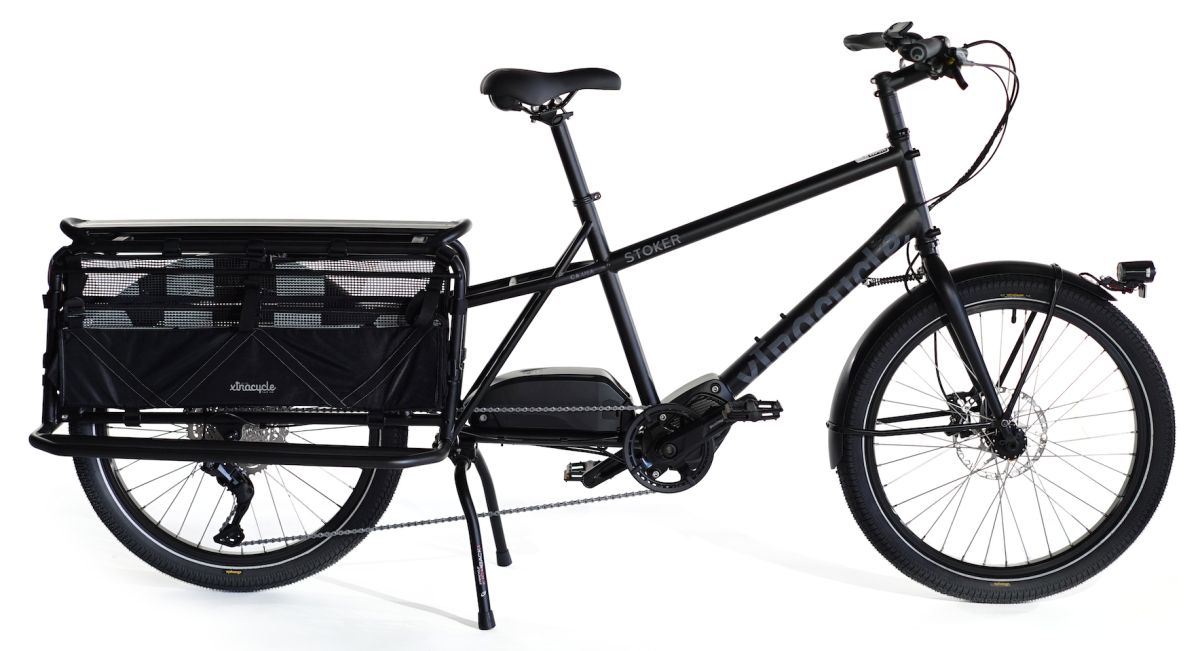
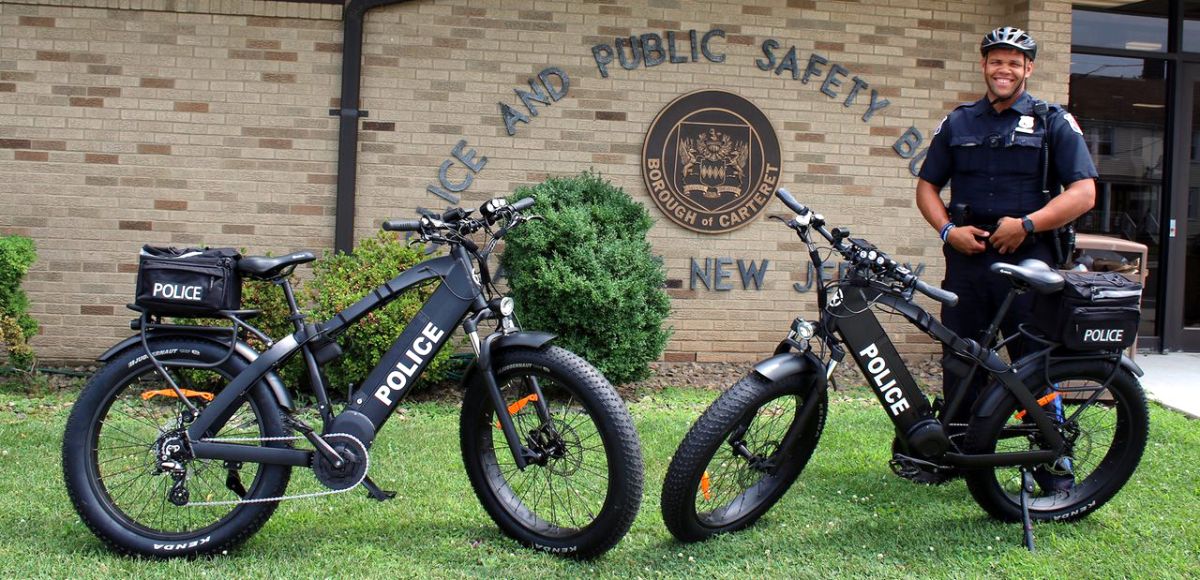
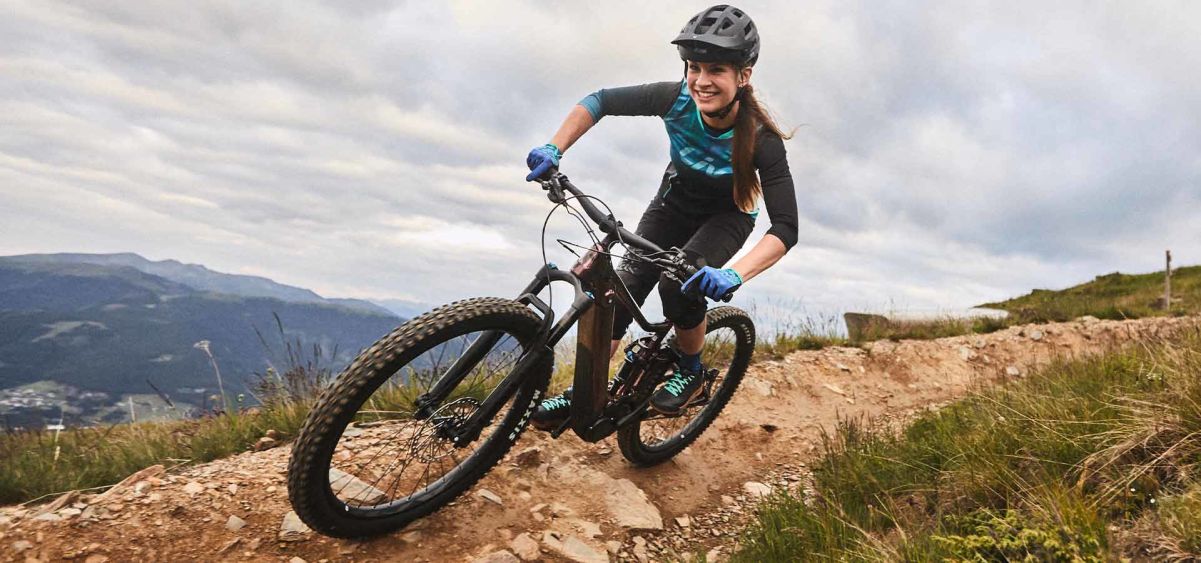
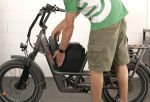
COMMENTS
There are dozens and dozens of kinds of boats in the world. You have banana boats, log boats, bass boats and so many more. That's why the class system is broken down by length. It makes it much easier to categorize a boat in these simple terms rather than trying to manage each type individually.
Boat Classes Explained. A boat's class is defined by its length, which is measured along the center line, from the tip of the bow to the stern, not including platforms, outboard motors, attachments, or anything that is not part of the actual hull. The class of a boat governs the safety requirements set forth by federal and state law.
A Beginners Guide to Motorboats There are many different types of motorboats, from small runabouts to mega yachts, with a vast array of hull shapes, construction materials, and propulsion systems.Sometimes referred to as powerboats, motor yachts, or superyachts (typically when over 100 feet long), what these boats share in common is that they all have some sort of engine or motor for ...
Fishing Boat Sizes. Boats are divided into four length classes: Class A Vessels: These classes of vessels have less than 16 feet in length. Class I Vessels: These classes of vessels range from 16 feet to no more than 26 feet in length. Class II Vessels: These classes of vessels range from 26 feet to no more than 40 feet in length. Class III Vessels: These classes of vessels range from 40 feet ...
Every weekend, she spends time on the boat with her spouse and their two young kids. Britt knows all there is to know about watersports, fishing, and cruising (and has great tips for saving money as a boat owner). The four classes of boats are Class A (under 16 ft), Class 1 (16-26 ft), Class 2 (26-40 ft), and Class 3 (40-65 ft).
Class 3. Boats measuring more than 40 feet but less than 65 feet. How To Determine a Boat's Size. To find out a boat's length, measure along its center line from the outside of the bow to the outside of the stern. That means any attachments, such as swim platforms or wakeboard towers, don't count towards its length. ...
What are the different classes of motorboat? 23 V.S.A. § 3304 defines motorboat classes as follows. Motorboats shall be divided into four classes as follows: Class A - Less than 16 feet in length. Class 1 - 16 feet or over and less than 26 feet in length. Class 2 - 26 feet or over and less than 40 feet in length. Class 3 - 40 feet or over.
These determinations are based on the class of boat, which puts your craft into a size range. Class A less than 16 feet; Class 1 16 to less than 26 feet; Class 2 26 feet to less than 40 feet; Class 3 40 feet to less than 65 feet; SRV (small research vessel) Boats of 65 feet in length, yet less than 300 gross tons fit this category.
Thirteen of the PRO classes are based primarily on motor displacement. They are sometimes referred to as "bore and stroke" classes. The maximum displacements of bore and stroke classes are 125cc (128.75cc), 175cc, 250cc (257.5cc), 350cc, 500cc, 700cc, and 1100cc (1133cc). ... The K PRO Hydro class is a class for kids only. The OSY400 class is ...
MAS (motorboat) Motoscafo armato silurante (torpedo-armed motorboat), alternatively Motoscafo antisommergibili (anti-submarine motorboat) and commonly abbreviated as MAS, was a class of fast torpedo-armed vessels used by the Regia Marina (Italian Royal Navy) during World War I and World War II. Originally, "MAS" referred to motobarca armata ...
Commercial yacht. A motor or sailing vessel in commercial use (i.e. charter) for sport and pleasure, carrying no cargo and not more than 12 passengers. Private yacht. A pleasure vessel solely used for the recreational and leisure purpose of its owner and his guests. Flag administration.
28 Motorboat Types - from Aft-Cabin to Walkaround ... heliport, 3 or more guest rooms and room for a full crew of around 30 people, megayachts are decadent floating resorts. Pontoon Boat ... To get started on your search, browse our boats and yachts for sale, call us, or visit our world-class sales dock at 2320 Harbour Rd in Sidney, BC. Share ...
1. Trek Allant+ 8s. Best mid-drive class 3 ebike. MSRP: $4,450. Weight - 56.3 lbs | Battery - 625 Wh | Motor - Bosch Performance Speed | Range - 60+ mi | Torque - 85 Nm. Trek is famous for its reliable and powerful class 3 ebikes that look modern and come jam-packed with practical accessories.
It reviews minimum requirements for safe operation of motorboats and includes a review of legal requirements, preparations, navigation, operations, emergency procedures, rescue, self-rescue, trailering, fire suppression, and basic seamanship. The course includes both classroom and on-the-water instruction. There is an on-the-water practical ...
Isata 3 Series Class C Motorhome. Built on the fuel efficient Mercedes Sprinter platform, the Isata 3 Series embodies everything you love about Dynamax. Legendary full body paint, contemporary interiors and functional living space, paired with a high performance chassis. The Isata 3 Series Class C Motorhome boasts an extensive list of upgraded ...
The Class 3 motor is the least common and isn't divided any further into groups. However, Class 1 and 2 motors are grouped by your specific hazardous substance. The most common groups and materials are listed below. Group A: Acetylene. Group B: Hydrogen, Butadiene, Ethylene Oxide, Propylene Oxide, Acrolien.
TIPS FOR COMPARING CLASS C RVS FOR SALE. Camping World has nearly 4,000 new and used Class C RVs for sale from popular brands like Thor, Winnebago, Forest River, Jayco, Dynamax, and more. We sell a range of Class C units, from small motorhomes measuring less than 25 feet to Super C motorhomes that are nearly 40 feet long.
We really enjoyed the Ride1Up Revv 1, but the Ride1Up Revv 1 FS adds more than just full suspension to the attractive package. This "electric bike" blew us away with its power, comfort, and convenience features.This is the highest-ranking bike in our review of class 3 electric bikes.The Revv 1 FS has a massive 1040Wh battery, giving it more range than any other bike we've tested.
Gazelle says that its new Eclipse is the "first and only Class 3 e-bike in the US to feature Bosch's Smart System," which fully integrates the bike's motor and electronics with the Bosch ...
The motor will then 'kick in' and provide an extra boost. On Class 3 e-bikes in the United States, assistance from the motor will cut out at 28 mph. Any further acceleration past this speed, will be due to the rider's own effort. Many Class 3 e-bikes are sold without a throttle. In some states, Class 3 e-bikes can not have a throttle fitted.
Class 3 e-bikes, often referred to as "speed pedelecs," belong to a distinct category within the broader spectrum of electric bicycles. These bikes are designed to provide electric assistance up to speeds of 28 miles per hour (45 kilometers per hour). Unlike their Class 1 and Class 2 counterparts, which have lower speed limits, Class 3 e ...
Class C motorhomes are the middle ground between Class A motorhomes and Class B motorhomes. They look like a larger version of the van camper with an overhead cabin above the driver and passenger seats for extra sleeping or storage accommodations. Class C motorhomes range from 30 to 33 feet long, sleep up to eight and start around $65,000.